
200+ Biotechnology Research Topics: Let’s Shape the Future
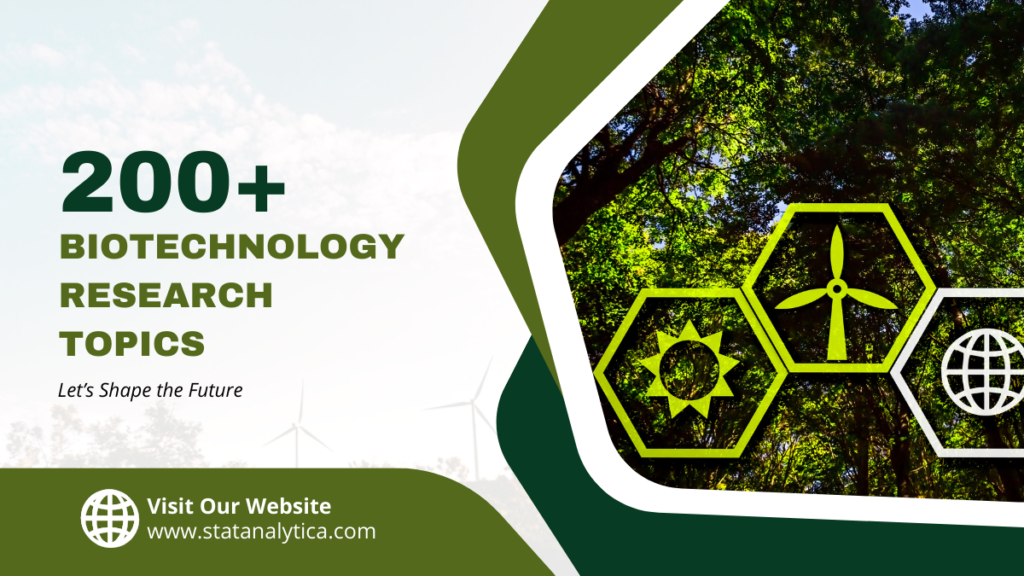
In the dynamic landscape of scientific exploration, biotechnology stands at the forefront, revolutionizing the way we approach healthcare, agriculture, and environmental sustainability. This interdisciplinary field encompasses a vast array of research topics that hold the potential to reshape our world.
In this blog post, we will delve into the realm of biotechnology research topics, understanding their significance and exploring the diverse avenues that researchers are actively investigating.
Overview of Biotechnology Research
Table of Contents
Biotechnology, at its core, involves the application of biological systems, organisms, or derivatives to develop technologies and products for the benefit of humanity.
The scope of biotechnology research is broad, covering areas such as genetic engineering, biomedical engineering, environmental biotechnology, and industrial biotechnology. Its interdisciplinary nature makes it a melting pot of ideas and innovations, pushing the boundaries of what is possible.
How to Select The Best Biotechnology Research Topics?
- Identify Your Interests
Start by reflecting on your own interests within the broad field of biotechnology. What aspects of biotechnology excite you the most? Identifying your passion will make the research process more engaging.
- Stay Informed About Current Trends
Keep up with the latest developments and trends in biotechnology. Subscribe to scientific journals, attend conferences, and follow reputable websites to stay informed about cutting-edge research. This will help you identify gaps in knowledge or areas where advancements are needed.
- Consider Societal Impact
Evaluate the potential societal impact of your chosen research topic. How does it contribute to solving real-world problems? Biotechnology has applications in healthcare, agriculture, environmental conservation, and more. Choose a topic that aligns with the broader goal of improving quality of life or addressing global challenges.
- Assess Feasibility and Resources
Evaluate the feasibility of your research topic. Consider the availability of resources, including laboratory equipment, funding, and expertise. A well-defined and achievable research plan will increase the likelihood of successful outcomes.
- Explore Innovation Opportunities
Look for opportunities to contribute to innovation within the field. Consider topics that push the boundaries of current knowledge, introduce novel methodologies, or explore interdisciplinary approaches. Innovation often leads to groundbreaking discoveries.
- Consult with Mentors and Peers
Seek guidance from mentors, professors, or colleagues who have expertise in biotechnology. Discuss your research interests with them and gather insights. They can provide valuable advice on the feasibility and significance of your chosen topic.
- Balance Specificity and Breadth
Strike a balance between biotechnology research topics that are specific enough to address a particular aspect of biotechnology and broad enough to allow for meaningful research. A topic that is too narrow may limit your research scope, while one that is too broad may lack focus.
- Consider Ethical Implications
Be mindful of the ethical implications of your research. Biotechnology, especially areas like genetic engineering, can raise ethical concerns. Ensure that your chosen topic aligns with ethical standards and consider how your research may impact society.
- Evaluate Industry Relevance
Consider the relevance of your research topic to the biotechnology industry. Industry-relevant research has the potential for practical applications and may attract funding and collaboration opportunities.
- Stay Flexible and Open-Minded
Be open to refining or adjusting your research topic as you delve deeper into the literature and gather more information. Flexibility is key to adapting to new insights and developments in the field.
200+ Biotechnology Research Topics: Category-Wise
Genetic engineering.
- CRISPR-Cas9: Recent Advances and Applications
- Gene Editing for Therapeutic Purposes: Opportunities and Challenges
- Precision Medicine and Personalized Genomic Therapies
- Genome Sequencing Technologies: Current State and Future Prospects
- Synthetic Biology: Engineering New Life Forms
- Genetic Modification of Crops for Improved Yield and Resistance
- Ethical Considerations in Human Genetic Engineering
- Gene Therapy for Neurological Disorders
- Epigenetics: Understanding the Role of Gene Regulation
- CRISPR in Agriculture: Enhancing Crop Traits
Biomedical Engineering
- Tissue Engineering: Creating Organs in the Lab
- 3D Printing in Biomedical Applications
- Advances in Drug Delivery Systems
- Nanotechnology in Medicine: Theranostic Approaches
- Bioinformatics and Computational Biology in Biomedicine
- Wearable Biomedical Devices for Health Monitoring
- Stem Cell Research and Regenerative Medicine
- Precision Oncology: Tailoring Cancer Treatments
- Biomaterials for Biomedical Applications
- Biomechanics in Biomedical Engineering
Environmental Biotechnology
- Bioremediation of Polluted Environments
- Waste-to-Energy Technologies: Turning Trash into Power
- Sustainable Agriculture Practices Using Biotechnology
- Bioaugmentation in Wastewater Treatment
- Microbial Fuel Cells: Harnessing Microorganisms for Energy
- Biotechnology in Conservation Biology
- Phytoremediation: Plants as Environmental Cleanup Agents
- Aquaponics: Integration of Aquaculture and Hydroponics
- Biodiversity Monitoring Using DNA Barcoding
- Algal Biofuels: A Sustainable Energy Source
Industrial Biotechnology
- Enzyme Engineering for Industrial Applications
- Bioprocessing and Bio-manufacturing Innovations
- Industrial Applications of Microbial Biotechnology
- Bio-based Materials: Eco-friendly Alternatives
- Synthetic Biology for Industrial Processes
- Metabolic Engineering for Chemical Production
- Industrial Fermentation: Optimization and Scale-up
- Biocatalysis in Pharmaceutical Industry
- Advanced Bioprocess Monitoring and Control
- Green Chemistry: Sustainable Practices in Industry
Emerging Trends in Biotechnology
- CRISPR-Based Diagnostics: A New Era in Disease Detection
- Neurobiotechnology: Advancements in Brain-Computer Interfaces
- Advances in Nanotechnology for Healthcare
- Computational Biology: Modeling Biological Systems
- Organoids: Miniature Organs for Drug Testing
- Genome Editing in Non-Human Organisms
- Biotechnology and the Internet of Things (IoT)
- Exosome-based Therapeutics: Potential Applications
- Biohybrid Systems: Integrating Living and Artificial Components
- Metagenomics: Exploring Microbial Communities
Ethical and Social Implications
- Ethical Considerations in CRISPR-Based Gene Editing
- Privacy Concerns in Personal Genomic Data Sharing
- Biotechnology and Social Equity: Bridging the Gap
- Dual-Use Dilemmas in Biotechnological Research
- Informed Consent in Genetic Testing and Research
- Accessibility of Biotechnological Therapies: Global Perspectives
- Human Enhancement Technologies: Ethical Perspectives
- Biotechnology and Cultural Perspectives on Genetic Modification
- Social Impact Assessment of Biotechnological Interventions
- Intellectual Property Rights in Biotechnology
Computational Biology and Bioinformatics
- Machine Learning in Biomedical Data Analysis
- Network Biology: Understanding Biological Systems
- Structural Bioinformatics: Predicting Protein Structures
- Data Mining in Genomics and Proteomics
- Systems Biology Approaches in Biotechnology
- Comparative Genomics: Evolutionary Insights
- Bioinformatics Tools for Drug Discovery
- Cloud Computing in Biomedical Research
- Artificial Intelligence in Diagnostics and Treatment
- Computational Approaches to Vaccine Design
Health and Medicine
- Vaccines and Immunotherapy: Advancements in Disease Prevention
- CRISPR-Based Therapies for Genetic Disorders
- Infectious Disease Diagnostics Using Biotechnology
- Telemedicine and Biotechnology Integration
- Biotechnology in Rare Disease Research
- Gut Microbiome and Human Health
- Precision Nutrition: Personalized Diets Using Biotechnology
- Biotechnology Approaches to Combat Antibiotic Resistance
- Point-of-Care Diagnostics for Global Health
- Biotechnology in Aging Research and Longevity
Agricultural Biotechnology
- CRISPR and Gene Editing in Crop Improvement
- Precision Agriculture: Integrating Technology for Crop Management
- Biotechnology Solutions for Food Security
- RNA Interference in Pest Control
- Vertical Farming and Biotechnology
- Plant-Microbe Interactions for Sustainable Agriculture
- Biofortification: Enhancing Nutritional Content in Crops
- Smart Farming Technologies and Biotechnology
- Precision Livestock Farming Using Biotechnological Tools
- Drought-Tolerant Crops: Biotechnological Approaches
Biotechnology and Education
- Integrating Biotechnology into STEM Education
- Virtual Labs in Biotechnology Teaching
- Biotechnology Outreach Programs for Schools
- Online Courses in Biotechnology: Accessibility and Quality
- Hands-on Biotechnology Experiments for Students
- Bioethics Education in Biotechnology Programs
- Role of Internships in Biotechnology Education
- Collaborative Learning in Biotechnology Classrooms
- Biotechnology Education for Non-Science Majors
- Addressing Gender Disparities in Biotechnology Education
Funding and Policy
- Government Funding Initiatives for Biotechnology Research
- Private Sector Investment in Biotechnology Ventures
- Impact of Intellectual Property Policies on Biotechnology
- Ethical Guidelines for Biotechnological Research
- Public-Private Partnerships in Biotechnology
- Regulatory Frameworks for Gene Editing Technologies
- Biotechnology and Global Health Policy
- Biotechnology Diplomacy: International Collaboration
- Funding Challenges in Biotechnology Startups
- Role of Nonprofit Organizations in Biotechnological Research
Biotechnology and the Environment
- Biotechnology for Air Pollution Control
- Microbial Sensors for Environmental Monitoring
- Remote Sensing in Environmental Biotechnology
- Climate Change Mitigation Using Biotechnology
- Circular Economy and Biotechnological Innovations
- Marine Biotechnology for Ocean Conservation
- Bio-inspired Design for Environmental Solutions
- Ecological Restoration Using Biotechnological Approaches
- Impact of Biotechnology on Biodiversity
- Biotechnology and Sustainable Urban Development
Biosecurity and Biosafety
- Biosecurity Measures in Biotechnology Laboratories
- Dual-Use Research and Ethical Considerations
- Global Collaboration for Biosafety in Biotechnology
- Security Risks in Gene Editing Technologies
- Surveillance Technologies in Biotechnological Research
- Biosecurity Education for Biotechnology Professionals
- Risk Assessment in Biotechnology Research
- Bioethics in Biodefense Research
- Biotechnology and National Security
- Public Awareness and Biosecurity in Biotechnology
Industry Applications
- Biotechnology in the Pharmaceutical Industry
- Bioprocessing Innovations for Drug Production
- Industrial Enzymes and Their Applications
- Biotechnology in Food and Beverage Production
- Applications of Synthetic Biology in Industry
- Biotechnology in Textile Manufacturing
- Cosmetic and Personal Care Biotechnology
- Biotechnological Approaches in Renewable Energy
- Advanced Materials Production Using Biotechnology
- Biotechnology in the Automotive Industry
Miscellaneous Topics
- DNA Barcoding in Species Identification
- Bioart: The Intersection of Biology and Art
- Biotechnology in Forensic Science
- Using Biotechnology to Preserve Cultural Heritage
- Biohacking: DIY Biology and Citizen Science
- Microbiome Engineering for Human Health
- Environmental DNA (eDNA) for Biodiversity Monitoring
- Biotechnology and Astrobiology: Searching for Life Beyond Earth
- Biotechnology and Sports Science
- Biotechnology and the Future of Space Exploration
Challenges and Ethical Considerations in Biotechnology Research
As biotechnology continues to advance, it brings forth a set of challenges and ethical considerations. Biosecurity concerns, especially in the context of gene editing technologies, raise questions about the responsible use of powerful tools like CRISPR.
Ethical implications of genetic manipulation, such as the creation of designer babies, demand careful consideration and international collaboration to establish guidelines and regulations.
Moreover, the environmental and social impact of biotechnological interventions must be thoroughly assessed to ensure responsible and sustainable practices.
Funding and Resources for Biotechnology Research
The pursuit of biotechnology research topics requires substantial funding and resources. Government grants and funding agencies play a pivotal role in supporting research initiatives.
Simultaneously, the private sector, including biotechnology companies and venture capitalists, invest in promising projects. Collaboration and partnerships between academia, industry, and nonprofit organizations further amplify the impact of biotechnological research.
Future Prospects of Biotechnology Research
As we look to the future, the integration of biotechnology with other scientific disciplines holds immense potential. Collaborations with fields like artificial intelligence, materials science, and robotics may lead to unprecedented breakthroughs.
The development of innovative technologies and their application to global health and sustainability challenges will likely shape the future of biotechnology.
In conclusion, biotechnology research is a dynamic and transformative force with the potential to revolutionize multiple facets of our lives. The exploration of diverse biotechnology research topics, from genetic engineering to emerging trends like synthetic biology and nanobiotechnology, highlights the breadth of possibilities within this field.
However, researchers must navigate challenges and ethical considerations to ensure that biotechnological advancements are used responsibly for the betterment of society.
With continued funding, collaboration, and a commitment to ethical practices, the future of biotechnology research holds exciting promise, propelling us towards a more sustainable and technologically advanced world.
Related Posts

Step by Step Guide on The Best Way to Finance Car

The Best Way on How to Get Fund For Business to Grow it Efficiently

[100+] Biotechnology Research Topics With Free [Thesis Pdf] 2023
Are You Searching Research Topics For Biotechnology , Topics For Biotechnology Research Paper, Biotechnology Research Topics For Students, Research Topics Ideas For Biotechnology, Biotechnology Research Topics For PhD, Biotechnology PhD Topics. So You are in right place.
In this article, we provide you latest research topics for Biotechnology with a full Phd thesis. By these research topics for Biotechnology you can get idea for your research work. On this website, you can get lots of Biotechnology Research Topics for College Students, PhD, Mphil, Dissertations, Thesis, Project, Presentation, Seminar or Workshop. Check the suggestions below that can help you choose the right research topics for Biotechnology: You can also Free Download Biotechnology Research PhD Thesis in Pdf by the given link.
Now Check 100+ Biotechnology Research Topics List
Table of Contents
Research Topic For Biotechnology 2023
Biotechnology research topics for dissertation, research topics ideas for biotechnology, biotechnology research topics ideas for college students, topics for biotechnology research paper, biotechnology research topics for thesis, biotechnology research topics for students, biotechnology research topics for undergraduate students, biotechnology research topics for university students, biotechnology research topics for phd, research topics for phd in biotechnology, research topics for mphil biotechnology, biotechnology phd topics, research paper topics for biotechnology, biotechnology research paper topics, phd thesis topic for biotechnology, research topics for biotechnology subject, biotechnology research topics for fisheries, research topics for biotechnology, biotechnology research topics examples.
Note: All Research Work Idea on this website is inspired by Shodhganga: a reservoir of Indian Theses. We provide you mostly research work under Creative Commons Licence. Credit goes to https://shodhganga.inflibnet.ac.in/
If you find any copyright content on this website and you have any objection than plz immediately connect us on [email protected]. We Will remove that content as soon as.
This Post is also helpful for: Biotechnology Thesis Pdf, Biotechnology Thesis Topics, Biotechnology Dissertation Topics, Biotechnology Thesis, Catchy Title For Biotechnology, Phd Thesis Topic for Biotechnology, Biotechnology Research Paper Topics, Biotechnology Phd Topics, Biotechnology Research Topics, Research Topics For Biotechnology Students in India, Biotechnology Research Topics For College Students.
11 thoughts on “[100+] Biotechnology Research Topics With Free [Thesis Pdf] 2023”
- Pingback: Home - Research Scholar
- Pingback: Home Page 3 - Research Scholar
- Pingback: How To Write Master Thesis Pdf: Step By Step Example and Quickly Tips - Research Scholar
- Pingback: How To Do Research in Philosophy 2023 - Research Scholar
- Pingback: How To Do Research in History 2023 - Research Scholar
- Pingback: How To Do Research in Life Science 2023 - Research Scholar
- Pingback: How To Do Research in Education 2023 - Research Scholar
- Pingback: How To Do Research in Management 2023 - Research Scholar
- Pingback: How To Do Research in Commerce 2023 - Research Scholar
- Pingback: How To Do Research in Botany 2023 - Research Scholar
- Pingback: How To Do Research in Microbiology 2023 - Research Scholar
Leave a Comment Cancel reply
Save my name, email, and website in this browser for the next time I comment.
- Criminal Law Assignment Help
- Taxation Law Assignment Help
- Business Law Assignment Help
- Contract Law Assignment Help
- Civil Law Assignment Help
- Land Law Assignment Help
- Tort Law Assignment Help
- Company Law Assignment Help
- Employment Law Assignment Help
- Environmental Law Assignment Help
- Commercial Law Assignment Help
- Criminology Assignment Help
- Corporate Governance Law Assignment Help
- Constitutional Law Assignment Help
- Operations Assignment Help
- HRM Assignment Help
- Marketing Management Assignment Help
- 4 Ps Of Marketing Assignment Help
- Strategic Marketing Assignment Help
- Project Management Assignment Help
- Strategic Management Assignment Help
- Risk Management Assignment Help
- Organisational Behaviour Assignment Help
- Business Development Assignment Help
- Change Management Assignment Help
- Consumer Behavior Assignment Help
- Operations Management Assignment Help
- Public Relations Assignment Help
- Supply Chain Management Assignment Help
- Conflict Management Assignment Help
- Environmental Assignment Help
- Public Policy Assignment Help
- Childcare Assignment Help
- Business Report Writing Help
- Pricing Strategy Assignment Help
- Corporate Strategy Assignment Help
- Managerial Accounting Assignment Help
- Capital Budgeting Assignment Help
- Accounting Assignment Help
- Cost Accounting Assignment Help
- Financial Accounting Assignment Help
- Corporate Finance Assignment Help
- Behavioural Finance Assignment Help
- Financial Ethics Assignment Help
- Financial Management Assignment Help
- Financial Reporting Assignment Help
- Forensic Accounting Assignment Help
- International Finance Assignment Help
- Cost-Benefit Analysis Assignment Help
- Financial Engineering Assignment Help
- Financial Markets Assignment Help
- Private Equity and Venture Capital Assignment Help
- Psychology Assignment Help
- Sociology Assignment Help
- English Assignment Help
- Political Science Assignment Help
- Arts Assignment Help
- Civil Engineering Assignment Help
- Computer Science And Engineering Assignment Help
- Economics Assignment Help
- Climate Change Economics Assignment Help
- Java Assignment Help
- MATLAB Assignment Help
- Database Assignment Help
- PHP Assignment Help
- UML Diagram Assignment Help
- Web Designing Assignment Help
- Networking Assignment Help
- Chemistry Assignment Help
- Biology Assignment Help
- Nursing Assignment Help
- Biotechnology Assignment Help
- Mathematics Assignment Help
- Assignment Assistance
- Assignment Help Online
- Cheap Assignment Help
- Assignment Paper Help
- Solve My Assignment
- Do My Assignment
- Get Assignment Help
- Urgent Assignment Help
- Write My Assignment
- Assignment Provider
- Quality Assignment Help
- Make My Assignment
- Online Assignment Writers
- Paid Assignment Help
- Top Assignment Help
- Writing Assignment For University
- Buy Assignment Online
- All Assignment Help
- Academic Assignment Help
- Assignment Help Tutors
- Student Assignment Help
- Custom Assignment Writing Service
- English Essay Help
- Law Essay Help
- Management Essay Help
- MBA Essay Help
- History Essay Help
- Literature Essay Help
- Online Essay Help
- Plagiarism Free Essay
- Write My Essay
- Admission Essay Help
- TOK Essay Help
- Best Essay Writing Service
- Essay Assignment Help
- Essay Writers Online
- Professional Essay Writers
- Academic Writing
- Homework Help
- Dissertation Help
- University Assignment Help
- College Assignment Help
- Research Paper Writing Help
- Case Study Help
- Coursework Help
- Thesis Help
- PowerPoint Presentation Service
- Job Openings
Top 100 Biotechnology Dissertation Topics for the Year 2021
- September 14, 2021 September 14, 2021
Biotechnology is one of the major streams of science where students request for our reliable and time-tested assignment help from prestigious universities, colleges, and institutes around the globe. The subject helps us understand how we can effectively utilise biological systems, living organisms, or their parts to develop or create different types of products.
GET HELP INSTANTLY Place your order to get best assignment help
(since 2006)
Apart from genetics, bioengineering and research, the subject offers decent career options in industrial sectors like textiles, food, agriculture, pharmaceutical and animal husbandry.
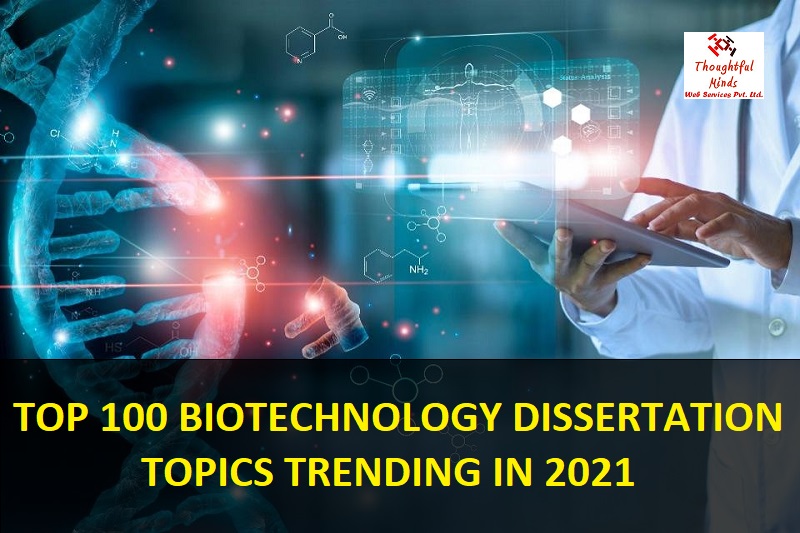
Introduction
Modern biotechnology has been credited with breakthrough innovations in the field of product development and technologies to help us develop a cleaner and more sustainable world. It is primarily because of biotechnology; we have progressed towards the development of more efficient industrial manufacturing base. Besides, it is helping in the production of cleaner energy, feed more hungry people without leaving much of our environmental footprint, and help mankind combat rare and debilitating diseases.
Our assignment writing services in the field of biotechnology cover all types of subject topics that test and vindicate the skill sets of the students before awarding them with their respective degrees. We help students successfully pass their syllabus in all forms of biotechnology courses. These include medical biotechnology (red), environmental biotechnology (green), marine biotechnology (blue) and industrial biotechnology (white).
What are We Expecting to Gain from All these Efforts?
Our sole objective of preparing this marathon list of top 100 biotechnology assignment topics is to help students decide upon effective time management skills. We have seen an immense numbers of cases where while exploring online assignment help related to topic selection, exploration of information sources, and citing them in correct reference order, students get stuck at different stages. Amongst them, most of the students find it difficult even to pass their topic selection dilemma. That is where we contribute to our efforts to make things easy for the biotech students right in one go. We help our students save time and energy, so that they can prudently use the assigned time to prepare the content of their assignment around the best topics.
Are you keen to master your dissertation writing skills in just a couple of weeks? Read the below amazing article and do not miss the golden opportunity to learn from the experts absolutely for free!
Must read: wish to master dissertation skills in 2 weeks learn from the experts here, top 100 biotechnology dissertation topics trending in the year 2021.
We have prepared the list of top 100 most recommended dissertation topics prepared by our research experts. They have ensured to provide a comprehensive list of topics that are covering all the dimensions of the subject. We fully hope that the list would cover all your dissertation help requirements. So, let us begin with the prepared list of topics one by one –
- Effective management of renewable energy technology to promote a village
- The production of ethanol with the help of molasses as well as its effluent treatment
- Different methods and aspects of evapotranspiration
- The scattering parameters of the circulator biotechnology
- The inactivation of the mammalian TLR2 through an inhibiting antibody
- Number of proteins through Mycobacterium tuberculosis
- The recognition and classification of the genes shaping the plant responses to salinity and drought
- The segment of small signing molecules in the responses of plants to salinity and drought
- Genetic improvement of the plant lenience to salinity and drought
- Pharmacogenomics of the drug transporters
- Pharmacogenomics of the anti-cancer drugs
- Pharmacogenomics of the anti-hypertensive drugs
- Indels genotyping of the African populations
- Y-chromosome genotyping of the African populations
- Profiling of the DNA isolated from the historical crime scenes: Discuss in terms of South African Innocence Project
- Nanotechnology methods in terms of DNA isolation
- Nanotechnology applications in terms of DNA genotyping
- Recognizing heavy metal tolerant along with sensitive genotypes
- Features of genes that participate in the process of heavy metal tolerance
- DNA authentication of the animal species through raw meat products reared commercially
- Molecular based technology in terms of rapid identification and detection of the food borne pathogens with respect to complex food systems
- Making an assessment of cancer specific peptides for successful implementations in the field of cancer diagnosis
- Quantum dot-based detection system development with respect to successful breast cancer diagnosis
- Targeted delivery of the embelin to the cancer cells
- Accessing the role of novel quinone compounds to perform as anti-cancer agents
- Therapeutic approaches to the treatment of HIV and the role of nanotechnology in it
- An assessment of the medicinal value of the natural antioxidants
- An indepth study of the structure of the COVID spike proteins
- An assessment of the immune response of the stem cell therapy
- The use of CRISPR-Cas9 technology for the purpose of genome editing
- Tissue engineering and the drug delivery with the application of Chitosan
- An assessment of therapeutic effects of the cancer vaccines
- Utilization of PacBio sequencing with respect to genome assembly of the model organisms
- Studying the relationship between the mRNA suppression and its impact on the expansion of the stem cell
- Utilizing biomimicry for the identification of the tumor cells
- The sub-classification and characterization of the Yellow enzymes
- The production of the hypoallergenic fermented foods
- The production of the hypoallergenic milk
- The purification process of the thermostable phytase
- Bioconversion of the cellulose to successfully yield the products that are industrially significant
- The examination of the gut microbiota in the model organisms
- The utilization of the fungal enzymes in the production of chemical glue
- An examination of the inhibitors of exocellulase and endocellulase
- Discuss the utility of microorganisms in the recovery of shale gas
- Discuss the in-depth study of the procedure of natural decomposition
- Discuss the process of recycling the bio-wastes
- Enhanced bio-remediation for the cases of oil spills
- The process of gold biosorption with the help of cyanobacterium
- Maintaining a healthy balance between the biotic and the abiotic factors with the help of biotechnological tools
- Labeling the level of mercury in fish with the help of markers
- Exploring out the biotechnological potential of the Jellyfish related microbiome
- What is the potential of marine fungi in the efforts to degrade polymers and plastics?
- Discuss the biotechnological potential that one can fetch out of dinoflagellates
- Tracing out endosulfan residues with the application of biotechnology in the field of agricultural products
- The development of the ELISA technique for the identification of crop viruses
- Boosting the quality of drinking water with the help of E.coli consortium
- The characterization of E.coli isolation from the feces of the zoo animals
- Improving the resistance of the crops against the invasion of the insects
- Reducing the spending on agriculture with the help of effective bio-tools
- What are the most effective steps to reduce soil erosion with the utility of tools derived from biotechnology?
- How biotechnology can help in the improvement the levels of vitamin in GM foods?
- Improving the delivery of pesticide with the help of biotechnology
- Comparing folate biofortification in different kinds of corps
- Discuss the photovoltaic-based production of the ocean crops
- How the application of nanotechnology to improve the activities of the agricultural sector?
- Examining the mechanisms of water stress tolerance in the model plants
- Testing and production of the human immune boosters in the experimental organisms
- Comparing genomic analysis with the utility of tools meant for bioinformatics
- Arabinogalactan protein sequencing and its utility in computational methods
- Evaluating and interpreting gut microbiota in the model organisms
- Different techniques of protein purification: A comparative analysis
- Diagnosing microbes and their role in o ligonucleotide micro-arrays
- The application of different techniques in the field of biomedical research comprising micro-arrays technology
- The application of microbial consortium in producing the greenhouse effect
- Computational assessment of various proteins accessed from marine microbiota
- E.coli gene mapping with the application of various microbial tools
- Enhancing the strains of cyanobacterium with the help of gene sequencing
- Computational assessment and description of the crystallized proteins present in nature
- mTERF protein and its application to terminate the transcription of mitochondrial DNA in algae
- Reverse phase column chromatography and its application in separating proteins
- The study of various proteins present within Mycobacterium leprae
- An assessment of the strategies that are ideally suitable for successful cloning of RNA
- Discuss the common failures of biotechnology in saving the ecology and the environment
- Is there a way to make the medicinal plants free of pests? Discuss
- What are the harms imposed by pest resistant corps on humans and birds?
- What are the diverse fields of biotechnology that still remain unexplored in terms of research?
- What is the future of biotechnology in the field of medicine?
- The application of recombinant DNA technology in the invention of new forms of medicine
- Why is the strain of bacteria used to create vaccine with the help of biotechnology?
- How biotechnology can help in the creation of medicines that are more resistant towards the mutating forms of viruses and bacteria?
- Can there be a permanent cure for cancer in the future? How biotechnology can play a decisive role in it?
- Why it is critical for the students to effectively remember the DNA coding in the field of biotechnology?
- How one can make hybrid seeds with the help from biotechnology?
- How one can generate pest resistant seeds and what are their benefits in the end yielding in agriculture?
- Discuss bio-magnification and its impact on ecology
- What are the reasons due to which the ecologists disapprove the usage of pest resistant seeds, despite their usage in the field of agriculture?
- How biotechnology positively influenced the lives of farmers in the developing economies?
- How biotechnology functions to increase in yield of the crop plants?
- Discuss the role of biotechnology in boosting the output of seasonal crops
- Are there adverse effects of medicines in pharmacology when manufactured with biotechnological principles? Throw some light on the question with real-life cases
Now with that, we have reached the end of this list and fully hope that it would have served the purpose of topic selection requirements. Besides, the inclusion of biotechnology assignment topics has been done in such a manner that it can help us out with our needs related to different other assignment writing formats as well. For instance, all our topic selection requirements related to case study help , essay help , research paper writing help or thesis help can also be met with the topics in the above-mentioned list.
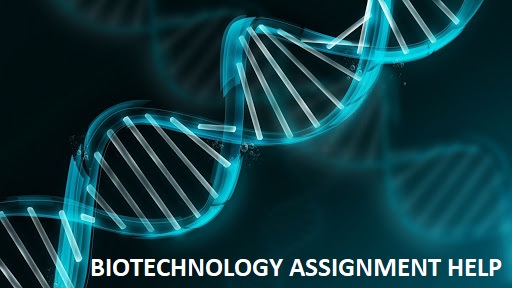
Are you facing the heat of topic selection dilemma in your biology assignment homework? Check the below link to rely upon the topic list that the most respected experts recommend.
Must read: top 100 biology dissertation topics for the year 2021.
Biotechnology is a subject that is meant to offer a plethora of research prospects. A successful completion of course in one or more streams of biotechnology will ensure job placement opportunities in different research and development companies dedicated to the field. The objective of recommending this list is to help you make the right topic selection in less amount of time and dedicate more time to assignment research, and adequate content writing. After all, going an extra mile in terms of efforts will ensure that the final submission is good enough to help you earn the grades that can help you beat the competition.
If you have liked our recommended list of 100 biotechnology topics, then we invite you to reach our paid assignment help to unburden all the biotech assignment worries onto the shoulders of the most trusted professional assignment writers. Reach biotechnology assignment help to learn how the most trusted online homework help agency has helped thousands of biotechnology students to skyrocket to better career opportunities in the last 15 years. It is the time to step-in and reap the benefits from what the best in business has to offer!
- Google Meet
- Mobile Dialer

Resent Search

Management Assignment Writing

Technical Assignment Writing

Finance Assignment Writing

Medical Nursing Writing

Resume Writing

Civil engineering writing

Mathematics and Statistics Projects

CV Writing Service

Essay Writing Service

Online Dissertation Help

Thesis Writing Help

RESEARCH PAPER WRITING SERVICE

Case Study Writing Service

Electrical Engineering Assignment Help

IT Assignment Help

Mechanical Engineering Assignment Help

Homework Writing Help
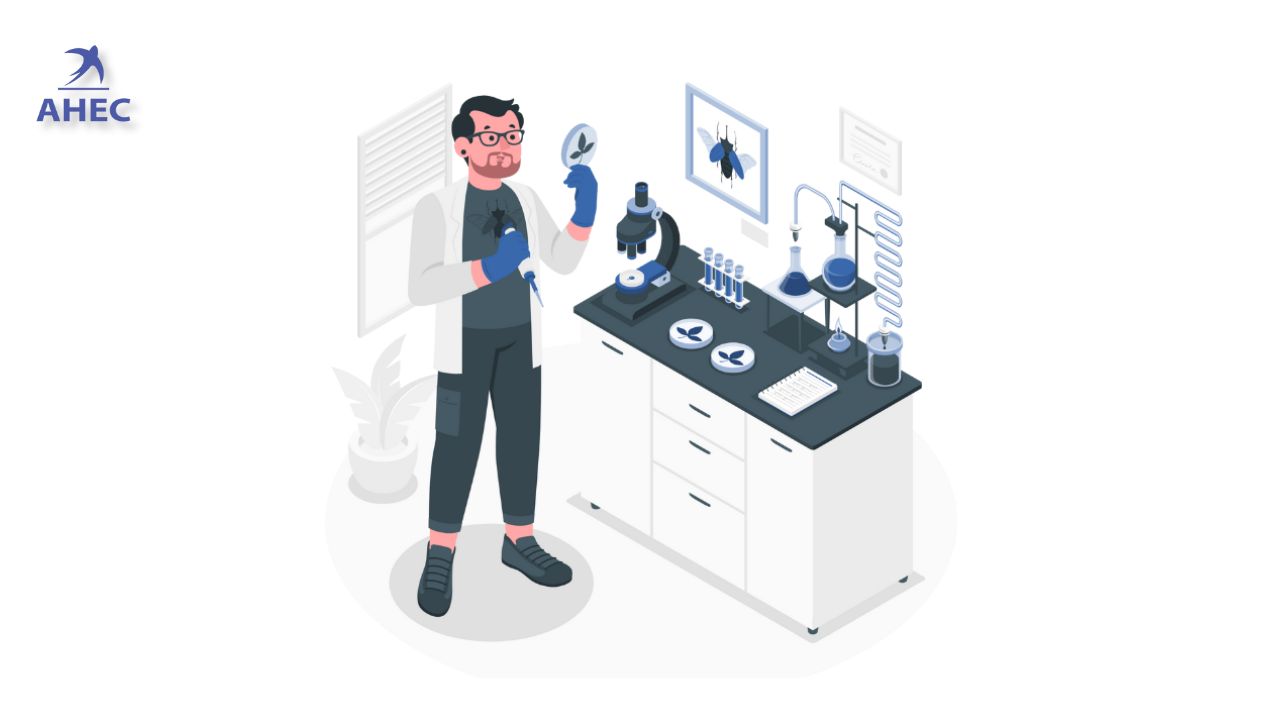
Science Assignment Writing

Arts Architecture Assignment Help

Chemical Engineering Assignment Help

Computer Network Assignment Help

Arts Assignment Help

Coursework Writing Help

Custom Paper Writing Services

Personal Statement Writing

Biotechnology Assignment Help

C Programming Assignment Help

MBA Assignment Help

English Essay Writing

MATLAB Assignment Help

Narrative Writing Help

Report Writing Help

Get Top Quality Assignment Assistance

Online Exam Help

Macroeconomics Homework Help

Change Management Assignment Help

Operation management Assignment Help

Strategy Assignment Help

Human Resource Management Assignment Help

Psychology Assignment Writing Help

Algebra Homework Help

Best Assignment Writing Tips

Statistics Homework Help

CDR Writing Services

TAFE Assignment Help

Auditing Assignment Help

Literature Essay Help

Online University Assignment Writing

Economics Assignment Help

Programming Language Assignment Help

Political Science Assignment Help

Marketing Assignment Help

Project Management Assignment Help

Geography Assignment Help

Do My Assignment For Me

Business Ethics Assignment Help

Pricing Strategy Assignment Help

The Best Taxation Assignment Help

Finance Planning Assignment Help

Solve My Accounting Paper Online

Market Analysis Assignment

4p Marketing Assignment Help

Corporate Strategy Assignment Help

Project Risk Management Assignment Help

Environmental Law Assignment Help

History Assignment Help

Geometry Assignment Help

Physics Assignment Help

Clinical Reasoning Cycle

Forex Assignment Help

Python Assignment Help

Behavioural Finance Assignment Help

PHP Assignment Help
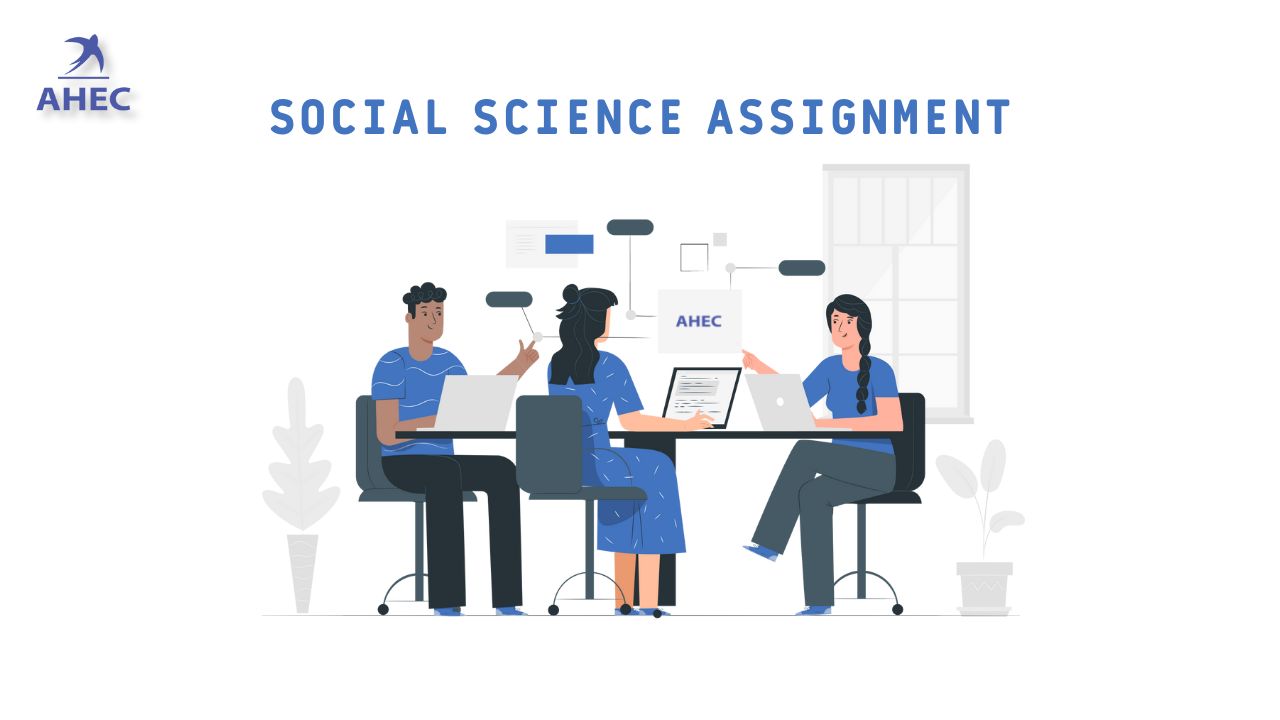
Social Science Assignment Help

Capital Budgeting Assignment Help

Trigonometry Assignment Help

Java Programming Assignment Help

Corporate Finance Planning Help

Sports Science Assignment Help

Accounting For Financial Statements Assignment Help

Robotics Assignment Help

Cost Accounting Assignment Help

Business Accounting Assignment Help

Activity Based Accounting Assignment Help

Econometrics Assignment Help

Managerial Accounting Assignment Help

R Studio Assignment Help
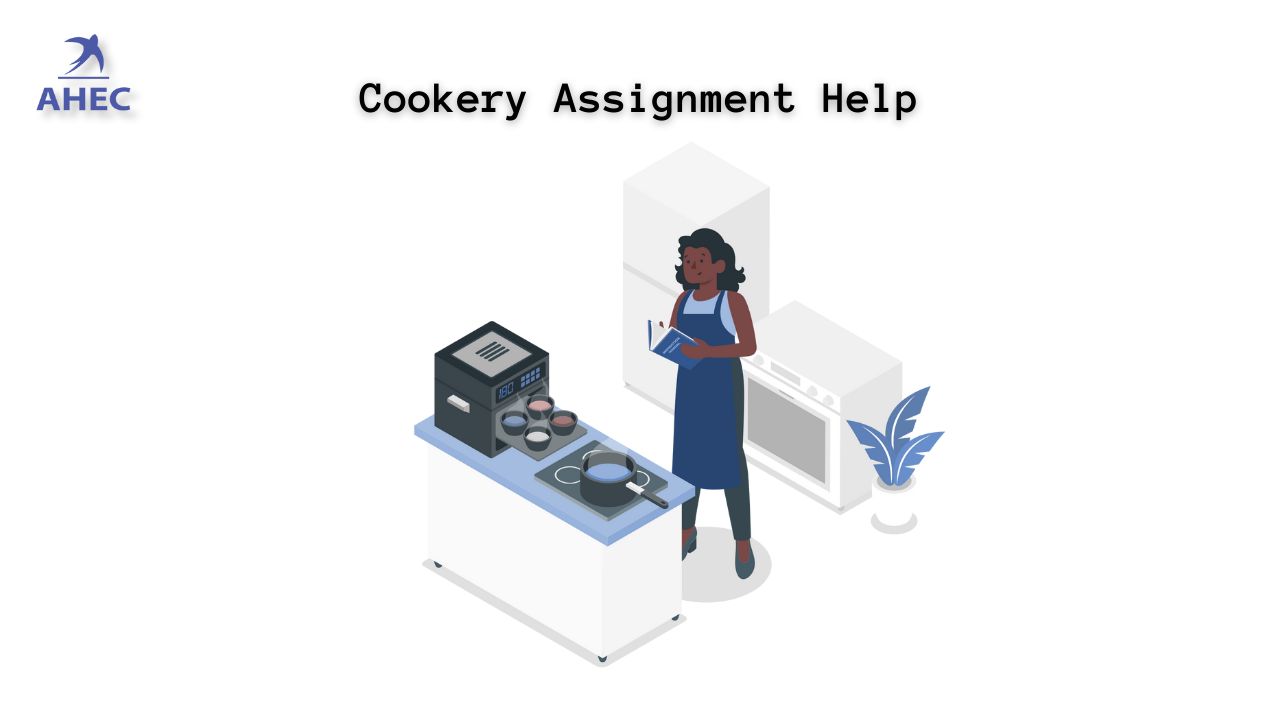
Cookery Assignment Help

Solidworks assignment Help

UML Diagram Assignment Help

Data Flow Diagram Assignment Help

Employment Law Assignment Help

Calculus Assignment Help

Arithmetic Assignment Help

Write My Assignment

Business Intelligence Assignment Help

Database Assignment Help

Fluid Mechanics Assignment Help

Web Design Assignment Help

Student Assignment Help

Online CPM Homework Help

Chemistry Assignment Help

Biology Assignment Help

Corporate Governance Law Assignment Help

Auto CAD Assignment Help

Public Relations Assignment Help

Bioinformatics Assignment Help

Engineering Assignment Help

Computer Science Assignment Help

C++ Programming Assignment Help

Aerospace Engineering Assignment Help

Agroecology Assignment Help

Finance Assignment Help

Conflict Management Assignment Help

Paleontology Assignment Help

Commercial Law Assignment Help

Criminal Law Assignment Help

Anthropology Assignment Help

Biochemistry Assignment Help

Get the best cheap assignment Help

Online Pharmacology Course Help

Urgent Assignment Help

Paying For Assignment Help

HND Assignment Help

Legitimate Essay Writing Help

Best Online Proofreading Services

Need Help With Your Academic Assignment

Assignment Writing Help In Canada

Assignment Writing Help In UAE

Online Assignment Writing Help in the USA

Assignment Writing Help In Australia

Assignment Writing Help In the UK

Scholarship Essay Writing Help

University of Huddersfield Assignment Help

Ph.D. Assignment Writing Help

Law Assignment Writing Help

Website Design and Development Assignment Help
Research Proposal Topics In Biotechnology
Biotechnology is a fascinating subject that blends biology and technology and provides a huge chance to develop new ideas. However, before pursuing a career in this field, a person needs to complete a number of studies and have a thorough knowledge of the matter. When we begin our career must we conduct study to discover some innovative innovations that could benefit people around the world. Biotechnology is one of a variety of sciences of life, including pharmacy. Students who are pursuing graduation, post-graduation or PhD must complete the research work and compose their thesis to earn the satisfaction in their education. When choosing a subject for biotechnology-related research it is important to choose one that is likely to inspire us. Based on our passion and personal preferences, the subject to study may differ.
What is Biotechnology?
In its most basic sense, biotechnology is the science of biology that enables technology Biotechnology harnesses the power of the biomolecular and cellular processes to create products and technologies that enhance our lives and the wellbeing of the planet. Biotechnology has been utilizing microorganisms' biological processes for over six thousand years to create useful food items like cheese and bread as well as to keep dairy products in good condition.
Modern biotechnology has created breakthrough products and technology to treat rare and debilitating illnesses help reduce our footprint on the environment and feed hungry people, consume less energy and use less and provide safer, more clean and productive industrial production processes.
Introduction
Biotechnology is credited with groundbreaking advancements in technological development and development of products to create sustainable and cleaner world. This is in large part due to biotechnology that we've made progress toward the creation of more efficient industrial manufacturing bases. Additionally, it assists in the creation of greener energy, feeding more hungry people and not leaving a large environmental footprint, and helping humanity fight rare and fatal diseases.
Our writing services for assignments within the field of biotechnology covers all kinds of subjects that are designed to test and validate the skills of students prior to awarding their certificates. We assist students to successfully complete their course in all kinds of biotechnology-related courses. This includes biological sciences for medical use (red) and eco-biotechnology (green) marine biotechnology (blue) and industrial biotechnology (white).
What do we hope to gain from all these Initiatives?
Our primary goal in preparing this list of the top 100 biotechnology assignment subjects is to aid students in deciding on effective time management techniques. We've witnessed a large amount of cases where when looking for online help with assignments with the topic, examining sources of information, and citing the correct order of reference students find themselves stuck at various points. In the majority of cases, students have difficulty even to get through their dilemma of choosing a topic. This is why we contribute in our effort to help make the process easier for students in biotech quickly and efficiently. Our students are able to save time and energy in order to help them make use of the time they are given to write the assignment with the most appropriate topics.
Let's look at some of the newest areas of biotechnology research and the related areas.
- Renewable Energy Technology Management Promoting Village
- Molasses is a molasses-based ingredient that can be used to produce and the treatment of its effluent
- Different ways to evapotranspirate
- Scattering Parameters of Circulator Bio-Technology
- Renewable Energy Technology Management Promoting Village.
Structural Biology of Infectious Diseases
A variety of studies are being conducted into the techniques used by pathogens in order to infect humans and other species and for designing strategies for countering the disease. The main areas that are available to study by biotech researchers include:
- inlA from Listeria monocytogenes when combined with E-cadherin from humans.
- InlC in Listeria monocytogenes that are multipart with human Tuba.
- Phospholipase PatA of Legionella pnemophila.
- The inactivation process of mammalian TLR2 by inhibiting antibody.
- There are many proteins that come originate from Mycobacterium tuberculosis.
Plant Biotechnology
Another significant area for research in biotechnology for plants is to study the genetic causes of the plant's responses to scarcity and salinity, which have a significant impact on yields of the crop and food.
- Recognition and classification of genes that influence the responses of plants to drought and salinity.
- A component of small-signing molecules in plants' responses to salinity and drought.
- Genetic enhancement of plant sensitivity salinity and drought.
Pharmacogenetics
It's also a significant area for conducting research in biotechnology. One of the most important reasons for doing so could be the identification of various genetic factors that cause differences in drug effectiveness and susceptibility for adverse reactions. Some of the subjects which can be studied are,
- Pharmacogenomics of Drug Transporters
- Pharmacogenomics of Metformin's response to type II mellitus
- The pharmacogenomics behind anti-hypertensive medicines
- The Pharmacogenomics of anti-cancer drugs
Forensic DNA
A further area of research in biotechnology research is the study of the genetic diversity of humans for its applications in criminal justice. Some of the topics that could be studied include,
- Y-chromosome Forensic Kit, Development of commercial prototype.
- Genetic testing of Indels in African populations.
- The Y-chromosome genotyping process is used for African populations.
- Study of paternal and maternal ancestry of mixed communities in South Africa.
- The study of the local diversity in genetics using highly mutating Y-STRs and Indels.
- South African Innocence Project: The study of DNA extracted from historical crime scene.
- Nanotechnology is a new technology that can be applied to DNA genotyping.
- Nanotechnology methods to isolate DNA.
Food Biotechnology
It is possible to conduct research in order to create innovative methods and processes in the fields of food processing and water. The most fascinating topics include:
- A molecular-based technology that allows for the rapid identification and detection of foodborne pathogens in intricate food chains.
- The effects of conventional and modern processing techniques on the bacteria that are associated with Aspalathus lineriasis.
- DNA-based identification of species of animals that are present in meat products that are sold raw.
- The phage assay and PCR are used to detect and limit the spread of foodborne pathogens.
- Retention and elimination of pathogenic, heat-resistant and other microorganisms that are treated by UV-C.
- Analysis of an F1 generation of the cross Bon Rouge x Packham's Triumph by Simple Sequence Repeat (SSR/microsatellite).
- The identification of heavy metal tolerant and sensitive genotypes
- Identification of genes that are involved in tolerance to heavy metals
- The isolation of novel growth-promoting bacteria that can help crops cope with heavy metal stress . Identification of proteins that signal lipids to increase the tolerance of plants to stress from heavy metals
This topic includes high-resolution protein expression profiling for the investigation of proteome profiles. The following are a few of the most fascinating topics:
- The identification and profile of stress-responsive proteins that respond to abiotic stress in Arabidopsis Thalian and Sorghum bicolor.
- Analyzing sugar biosynthesis-related proteins in Sorghum bicolor, and study of their roles in drought stress tolerance
- Evaluation of the viability and long-term sustainability of Sweet Sorghum for bioethanol (and other by-products) production in South Africa
- In the direction of developing an environmentally sustainable, low-tech hypoallergenic latex Agroprocessing System designed specifically especially for South African small-holder farmers.
Bioinformatics
This is an additional aspect of biotechnology research. The current trend is to discover new methods to combat cancer. Bioinformatics may help identify proteins and genes as well as their role in the fight against cancer. Check out some of the areas that are suitable to study.
- Prediction of anticancer peptides with HIMMER and the the support vector machine.
- The identification and verification of innovative therapeutic antimicrobial peptides for Human Immunodeficiency Virus In the lab and molecular method.
- The identification of biomarkers that are associated with cancer of the ovary using an molecular and in-silico method.
- Biomarkers identified in breast cancer, as possible therapeutic and diagnostic agents with a combination of molecular and in-silico approaches.
- The identification of MiRNA's as biomarkers for screening of cancerous prostates in the early stages an in-silico and molecular method
- Identification of putatively identified the genes present in breast cancer tissues as biomarkers for early detection of lobular and ductal breast cancers.
- Examining the significance of Retinoblastoma Binding Protein 6 (RBBP6) in the regulation of the cancer-related protein Y-Box Binding Protein 1 (YB-1).
- Examining the role played by Retinoblastoma Binding Protein 6 (RBBP6) in the regulation of the cancer suppressor p53 through Mouse Double Minute 2 (MDM2).
- Structural analysis of the anti-oxidant properties of the 1-Cys peroxiredoxin Prx2 found in the plant that resurrects itself Xerophyta viscosa.
Nanotechnology
This is a fascinating aspect of biotechnology, which can be used to identify effective tools to address the most serious health issues.
- Evaluation of cancer-specific peptides to determine their applications for the detection of cancer.
- The development of a quantum dot-based detection systems for breast cancer.
- The creation of targeted Nano-constructs for in vivo imaging as well as the treatment of tumors.
- Novel quinone compounds are being tested as anti-cancer medicines.
- Embedelin is delivered to malignant cells in a specific manner.
- The anti-cancer activities of Tulbaghia Violacea extracts were studied biochemically .
- Novel organic compounds are screened for their anti-cancer potential.
- To treat HIV, nanotechnology-based therapeutic techniques are being developed.
Top 100 Biotechnology Research Proposal Topics to Consider in 2022
We've prepared a list of the top 100 most suggested dissertation topics, which were compiled by our experts in research. They've made sure to offer a an extensive list of topics that cover all aspects of the topic. We hope that this list will meet all of the requirements for assistance with your dissertation . Let us start with our list of subjects, one at a time each one
- Achieving effective control of renewable power technologies to help the village
- The production of ethanol through the aid of molasses and the treatment of its effluent
- Different approaches and aspects of Evapotranspiration
- Its scattering parameter is biotechnology circulator
- The inactivation of mammalian TLR2 via an inhibiting antibody
- The number of proteins produced by Mycobacterium tuberculosis
- Recognition and classification of genes that shape the responses of plants to drought and salinity.
- The small sign molecules that are involved in the response that plants have to the effects of salinity as well as drought
- Genetic improvement of the plant's sensitivity to drought and saltiness
- The pharmacogenomics of drug transporters
- The anti-cancer drugs' pharmacogenomics are based on pharmac
- The pharmacogenomics of antihypertensive medications
- Indels genotyping of African populations
- Genomics of the Y-chromosomes of African populations
- The profiling of DNA extracted from historical crime scenes Consider the implications of South African Innocence Project
- Nanotechnology-related methods for DNA isolation
- Nanotechnology applications in the context of DNA genotyping
- Recognizing the heavy metals that are tolerant with genotypes that are sensitive.
- Genetic characteristics that play a role within the procedure of gaining tolerance to metals
- The animal's DNA is authenticated by the species by the commercial production of raw meat products
- The use of molecular-based technology is in the sense of detection and identification of foodborne pathogens in complicated food systems
- Assessing the effectiveness of cancer-specific peptides that are suitable for efficient implementations in the area of diagnosis and treatment for cancer
- Quantum Dot-based detection system is being developed in relation to a positive breast cancer diagnosis
- It is targeted delivery of the embelin to cancerous cells
- Exploring the potential of novel quinone compounds as anti-cancer agents
- Treatment strategies for treating HIV in addition to the significance of nanotechnology the treatment of HIV.
- A review of the medicinal value the antioxidants found in nature.
- An in-depth examination of the structure of COVID spike proteins
- A review of the immune response to the stem therapy using cells
- CRISPR-Cas9 technology to aid in the process of editing the genome
- Tissue engineering and delivery of drugs through the application of Chitosan
- Evaluation of beneficial effects of cancer vaccines
- Use of PacBio sequencing in relation to genome assembly of model organisms
- Examining the connection between mRNA suppression and its effect on the growth of stem cells
- Biomimicry is a method of identifying of cancer cells
- The sub-classification and characterisation of the Yellow enzymes
- The process of producing food products that are hypoallergenic and fermented.
- The production of hypoallergenic milk
- The purification process for the thermostable phytase
- Bioconversion of the cellulose produce products that are significant for industry
- The investigation of the gut microbiota of the model organisms
- The use of fungal enzymes for the manufacture of chemical glue
- A look at those inhibitors to exocellulase as well as endocellulase
- Examine the value of microorganisms to aid in the recovery of gas from shale.
- Examine the thorough analysis of the method of natural decomposition
- Examine ways to recycle bio-wastes
- Improved bio-remediation in the case of oil spills
- The process of gold biosorption is accomplished with the aid of the cyanobacterium
- A healthy equilibrium between the biotic and the abiotic elements by using biotechnological devices
- The measurement of the mercury level in fish by means of markers
- Exploring the biotechnological capabilities from Jellyfish related microbiomes Jellyfish related microbiome
- What is the role of marine fungi to aid in attempts to break down plastics and polymers?
- Examine the biotechnological possibilities that can be extracted of dinoflagellates
- Removing endosulfan residues using the use of biotechnology the agriculture sector
- The creation of the ELISA method for the detection of crop virus
- Enhancing the quality of drinking water by the aid of the E.coli consortium
- The characterisation of E.coli is its isolation from the feces of Zoo animals
- Enhancing the resistance of crops to the attack of insects
- The reduction of the expenditure on agriculture by using efficient bio-tools
- Are there the most efficient ways to stop erosion of soils using the help of biotechnology-based tools?
- What can biotechnology do to assist in increasing the levels of vitamin content in GM food items?
- Enhancing the distribution of pesticides by using biotechnology
- Comparing the biofortification of folate in various types of corpses
- Examine the photovoltaic-based generation of ocean-based crop
- What is the best way to use nanotechnology will improve the efficiency of the agriculture sector?
- Analyzing the mechanisms that govern resistance to water stresses in models of plants
- Production and testing of human immune boosters within the test organisms
- Comparing genomic analysis to the usefulness of tools intended for bioinformatics
- The Arabinogalactan protein sequence and its value in the field of computational methods
- Analyzing and interpreting gut microbiota from model organisms
- Different methods of purification of proteins A comparative analysis
- The diagnosis of microbes and their function in micro-arrays of oligonucleotide oligonu
- The use of diverse techniques within the biomedical research field that includes micro-arrays technology
- The use of microbial community to produce the greenhouse effect
- Evaluation of the computational properties of various proteins that are derived from the marine microbiota
- E.coli gene mapping through the help of different tools for microbial research
- Intensifying the strains of Cyanobacterium the aid of gene sequencing
- Assessment and description by computation of crystallized proteins that are found in the natural world.
- MTERF protein and the use of it to end the process of transcription that occurs in mitochondrial DNA inside algae
- Reverse column chromatography in phase and its use in the separation of proteins
- The study of the various proteins that are found within Mycobacterium leprae.
- A review of the methods that are ideal to ensure the success of cloning RNA
- Examine the most common mistakes of biotechnology in conserving the ecology and natural environment.
- Is there a method to ensure that the medicinal plants are free of insects? Discuss
- What are the dangers caused by pest resistant animals on birds and human beings?
- What are the many areas of biotechnology that remain unexplored in terms research?
- What's the future of biotechnology in the medical field?
- Recombinant DNA technology to develop of new medical treatments
- What is the reason for the type of bacteria that is used to make vaccines with the aid of biotechnology?
- How can biotechnology aid in the development of new medicines that are resistant to the mutations of viruses and bacteria?
- Is there a long-term treatment for cancer that is available in the near term? Biotechnology could play an essential role in this?
- What is the reason it is so important that students remember the DNA codes in biotechnology?
- How can we create hybrid seeds with assistance of biotechnology?
- How can one create resistant plants to pests and what are the benefits of these seeds in final yields in agriculture?
- Examine bio-magnification and its effects on the ecology
- What are the causes to the reasons ecologists do not approve the use of pest-resistant seed, even though they are in application in agriculture?
- How has biotechnology influenced the lives of farmers in developing countries?
- Biotechnology can be used to boost the yield of plant species?
- Examine the role played by biotechnology to increase the production of the seasonal crops
- Are there any adverse side effects associated with pharmaceutical drugs when they are manufactured with biotechnological techniques? Let the issue with real-world examples
We attempted to cover the essential topics needed for research work. Other topics are available that could be picked based on our interests, the facilities available and resources available for the research, as well as resources and time limits.
We have reached the end of this list. We feel it was beneficial in satisfying the selection criteria. Furthermore, the inclusion of biotechnology-related assignment themes was done in such a manner that they may help us with the requirements of assignment writing kinds and forms. The themes listed above can meet our demands for topic selection linked to aid with case studies and essay assistance, research paper writing help , or thesis writing help .
Frequently asked questions
What are some biotechnology research proposal topics .
Some of biotechnology topics are:
What are the research areas in biotechnology ?
What is best topic for research in biotechnology , what are some examples of biotechnology , what is the scope of biotechnology , what is master in biotechnology , is biotechnology a high paying job , is biotechnology hard to study , is biotechnology a good career , which agecy is best for biotechnology assignment help , can a biotechnologist become a doctor , is biotechnology better than microbiology , is b tech biotechnology a good course .

Top 10 Best Universities Ranking list in India 2022

Generic Conventions: Assignment Help Services

Research Paper Topics For Medical

Top 5 Resources for Writing Excellent Academic Assignments

How to Write a Literature Review for Academic Purposes

Tips for Writing a killer introduction to your assignment

How To Write A Compelling Conclusion For Your University Assignment

Research Papers Topics For Social Science

Best 150 New Research Paper Ideas For Students

7 Best Plagiarism Checkers for Students And Teachers in 2024
Hot Research Topics in Biotech in 2022

The past few years years have seen leaps and strides of innovation as scientists have worked to develop and produce new mRNA vaccinations and made major developments in biotech research. During this time, they’ve also faced challenges. Ongoing supply chain disruptions , the Great Resignation, and the pandemic have impacted biotech labs and researchers greatly, forcing lab managers and PIs to get creative with lab supply purchasing, experiment planning, and the use of technology in order to maintain their research schedules.
“The pace of innovation specific to COVID to be able to develop both medicines related to antibodies as well as vaccines is just staggering. Those of us in the industry are in awe of the innovation we’re witnessing on a daily basis. We’ve been behind in the use of automation, software, and AI that can make our industry more efficient — that’s where we’re headed,” says Michelle Dipp, Cofounder and Managing Partner, Biospring Partners on the This is ZAGENO podcast .
At the start of 2022, current biotech research projects are exploring advancements in medicine, vaccines, the human body and treatment of disease, bacteria and immunology, and viruses like the Coronavirus that affected the globe in ways we couldn’t have anticipated.
Biotech Research Processes are Changing
As Michelle explained, the research that’s happening is changing, and so is the way that scientists conduct it. Influenced by both B2C ecommerce and the growing dependence on remote and cloud-based working, biotech labs are undergoing digital transformations . This means more software, AI, and automation in the lab, along with modern digital procurement strategies and integrated systems for lab operations.
Here are some of the top biotech research trends and recent biotech research papers that are changing the world of science and leading to innovation in life sciences.
Top 6 Biotech Research Topics for 2022
Science journals have never been more popular as they’ve been in the past several years. Resonating with the general public, biotech research papers have found their way into the hands and social media streams of interested citizens and scientists alike.
As we look to the most credible, peer-reviewed sources for recent innovations like PubMed , the Journal of Biotechnology , BioTech , and Biotechnology Journal , the trending themes in biotech research are in direct response to COVID-19, like vaccine development, respiratory virus research, and RNA-based pharmaceuticals. Additionally, there have been major advances in metabolism and the human microbiome, as well as further exploration in microvesicles.
All of the research happening has the potential to change millions of people’s quality of life, prevent and treat illnesses that currently have high mortality rates, and change healthcare around the world.
Here's what's happening in biotech research.
1. Vaccine Development mRNA vaccine development has been in the works since 1989 and was accelerated in recent years to combat the global COVID-19 pandemic. Researchers like Maruggi, Zhang, Li, Ulmer, Yu and their team believe that mRNA vaccines could change infectious disease control as we know it as a prophylactic means of disease prevention for diseases like HIV, Zika, and the flu.
Recent developments in mRNA research from Pardi, Hogan, and Weissman in 2020 explored the ways that mRNA vaccines can combat certain cancers and infectious pathogens that were previously resistant to existing vaccine options.
With new access to data from the 3.4 billion+ COVID-19 mRNA vaccines that have been administered worldwide, researchers have been able to determine the risks associated with mRNA vaccines , which brings forward new topics for research in the medical and pharmaceutical sides of the biotech industry. mRNA vaccines are faster to develop and can help prevent more diseases than traditional vaccine methods.
2. Respiratory Viruses Acute respiratory diseases (ARDs) like those caused by the SARS-CoV pathogen or the influenza virus lead to morbidity and mortality, and can lead to pneumonia, which can be fatal for immunocompromised or elderly patients — they represent a huge impact to human society.
Identifying the cause of ARDs and identifying viral infections from COVID-19 has become an issue of public health and safety, leading research groups like Zhang, Wang, and team to seek out more accurate and faster ways to detect respiratory viruses .
Understanding these respiratory virus mechanisms can help lead to better protection, prevention, and treatments for respiratory viruses, which have a mortality rate of up to 78% .
3. RNA-based Therapeutics RNA-based treatments like modified non-coding RNAs (ncRNAs), microRNAs (miRNAs), and others have been developed and studied by teams like Feng, Patil, et al (2021) to treat various diseases and conditions, including pancreatic cancer, acute renal failure, acute kidney injuries, diabetic macular edema, and advanced solid tumors.
In 2022, we expect to see further development of RNA-based therapeutics, like CAR T cells and other gene/cell therapeutics, therapeutic antibodies, and small molecular drugs to treat even more diseases and for prophylactic purposes as well.
4. Microvesicles + Extracellular Vesicles Microvesicles are coming to light due to their involvement in transporting mRNA, miRNA, and proteins — but how else might they support the human body? There are unknown functions of microvesicles and other extracellular vesicles that have yet to be discovered.
In 2020, Ratajczak and Ratajczak found that understanding microvesicles (or exosomes, microparticles) could mean understanding cell-to-cell communication , and their research showed that extracellular vesicles could transfer mRNA and proteins and modify stem cells ex vivo. This year, we look forward to seeing more research on what these tiny cell parts can do.
5. Metabolism in Cancers + Other Diseases Metabolism is the process of energy conversion in organisms and it represents the chemical reactions that sustain life. Recent research on metabolism in cancers and in immune cells has uncovered new ways to approach treatment and prevention of certain illnesses.
Take a look at Matsushita, Nakagawa, and Koike’s (2021) research on lipid metabolism in oncology and how recent advances in lipidomics technology and mass spectrometry have opened the door for new analysis of lipid profiles of certain cancers.
6. The Human Microbiome The human microbiome hosts bacteria, microorganisms, and other naturally-occurring flora that can help us and harm us. Diet, stress, drugs, and other factors shape the microbiome, leading to inflammation and an immune response of cytokines. Recent machine learning and statistical analyses of microbiome data , like that of Indias, Lahti, Nedyalkova, and team (2021) are getting smarter and smarter by removing variables and providing ways to test new hypotheses using statistical modeling.
With a deeper understanding of the microbiome, researchers like David Sinclair have shown that lifestyle changes can actually help people live healthier lives for longer . Sinclair’s lab is at the forefront of aging research and its impact on healthcare — and it’s all rooted in biotechnology and life science experiments.
Recent updates to ICD-11 and its classification of aging as a disease have led to debate, with Sinclair and colleagues advocating for the ongoing paradigm shift that biological age and chronological age are not synonymous. The implications for longevity and aging research from a funding perspective will be impacted by WHO and NIH decisions, and we anticipate seeing more biotech research on topics like epigenetics, metabolism, mitochondrial dysfunction, reproduction, and stem cell developments in the coming years.
Biotech research can change humankind, and lead to a better quality of life for generations to come. Subscribe to the ZAGENO blog to keep up with the latest topics in biotech and life sciences research and find the tech that supports biotech lab managers and PIs in their ongoing work.
To learn more about how ZAGENO can eliminate the lab management challenges, gain access.

Related Posts

Striking the Balance: What Finance Needs from a Lab Supply Marketplace

How to Detect and Prevent R&D Procurement Fraud with AI and a Lab Supply Marketplace

How to easily manage thousands of R&D lab supply vendors
Biotechnology Research Paper Topics

This collection of biotechnology research paper topics provides the list of 10 potential topics for research papers and overviews the history of biotechnology.
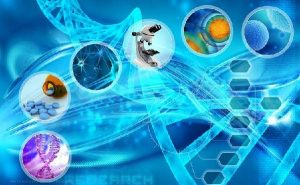
Academic Writing, Editing, Proofreading, And Problem Solving Services
Get 10% off with 24start discount code, 1. animal breeding: genetic methods.
Modern animal breeding relies on scientific methods to control production of domesticated animals, both livestock and pets, which exhibit desired physical and behavioral traits. Genetic technology aids animal breeders to attain nutritional, medical, recreational, and fashion standards demanded by consumers for animal products including meat, milk, eggs, leather, wool, and pharmaceuticals. Animals are also genetically designed to meet labor and sporting requirements for speed and endurance, conformation and beauty ideals to win show competitions, and intelligence levels to perform obediently at tasks such as herding, hunting, and tracking. By the late twentieth century, genetics and mathematical models were appropriated to identify the potential of immature animals. DNA markers indicate how young animals will mature, saving breeders money by not investing in animals lacking genetic promise. Scientists also successfully transplanted sperm-producing stem cells with the goal of restoring fertility to barren breeding animals. At the National Animal Disease Center in Ames, Iowa, researchers created a gene-based test, which uses a cloned gene of the organism that causes Johne’s disease in cattle in order to detect that disease to avert epidemics. Researchers also began mapping the dog genome and developing molecular techniques to evaluate canine chromosomes in the Quantitative Trait Loci (QTL). Bioinformatics incorporates computers to analyze genetic material. Some tests were developed to diagnose many of several hundred genetic canine diseases including hip dysplasia and progressive retinal atrophy (PRA). A few breed organizations modified standards to discourage breeding of genetically flawed animals and promote heterozygosity.
2. Antibacterial Chemotherapy
In the early years of the twentieth century, the search for agents that would be effective against internal infections proceeded along two main routes. The first was a search for naturally occurring substances that were effective against microorganisms (antibiosis). The second was a search for chemicals that would have the same effect (chemotherapy). Despite the success of penicillin in the 1940s, the major early advances in the treatment of infection occurred not through antibiosis but through chemotherapy. The principle behind chemotherapy was that there was a relationship between chemical structure and pharmacological action. The founder of this concept was Paul Erhlich (1854–1915). An early success came in 1905 when atoxyl (an organic arsenic compound) was shown to destroy trypanosomes, the microbes that caused sleeping sickness. Unfortunately, atoxyl also damaged the optic nerve. Subsequently, Erhlich and his co-workers synthesized and tested hundreds of related arsenic compounds. Ehrlich was a co-recipient (with Ilya Ilyich Mechnikov) of the Nobel Prize in medicine in 1908 for his work on immunity. Success in discovering a range of effective antibacterial drugs had three important consequences: it brought a range of important diseases under control for the first time; it provided a tremendous stimulus to research workers and opened up new avenues of research; and in the resulting commercial optimism, it led to heavy postwar investment in the pharmaceutical industry. The therapeutic revolution had begun.
3. Artificial Insemination and in Vitro Fertilization
Artificial insemination (AI) involves the extraction and collection of semen together with techniques for depositing semen in the uterus in order to achieve successful fertilization and pregnancy. Throughout the twentieth century, the approach has offered animal breeders the advantage of being able to utilize the best available breeding stock and at the correct time within the female reproductive cycle, but without the limitations of having the animals in the same location. AI has been applied most intensively within the dairy and beef cattle industries and to a lesser extent horse breeding and numerous other domesticated species.
Many of the techniques involved in artificial insemination would lay the foundation for in vitro fertilization (IVF) in the latter half of the twentieth century. IVF refers to the group of technologies that allow fertilization to take place outside the body involving the retrieval of ova or eggs from the female and sperm from the male, which are then combined in artificial, or ‘‘test tube,’’ conditions leading to fertilization. The fertilized eggs then continue to develop for several days ‘‘in culture’’ until being transferred to the female recipient to continue developing within the uterus.
4. Biopolymers
Biopolymers are natural polymers, long-chained molecules (macromolecules) consisting mostly of a repeated composition of building blocks or monomers that are formed and utilized by living organisms. Each group of biopolymers is composed of different building blocks, for example chains of sugar molecules form starch (a polysaccharide), chains of amino acids form proteins and peptides, and chains of nucleic acid form DNA and RNA (polynucleotides). Biopolymers can form gels, fibers, coatings, and films depending on the specific polymer, and serve a variety of critical functions for cells and organisms. Proteins including collagens, keratins, silks, tubulins, and actin usually form structural composites or scaffolding, or protective materials in biological systems (e.g., spider silk). Polysaccharides function in molecular recognition at cell membrane surfaces, form capsular barrier layers around cells, act as emulsifiers and adhesives, and serve as skeletal or architectural materials in plants. In many cases these polymers occur in combination with proteins to form novel composite structures such as invertebrate exoskeletons or microbial cell walls, or with lignin in the case of plant cell walls.
The use of the word ‘‘cloning’’ is fraught with confusion and inconsistency, and it is important at the outset of this discussion to offer definitional clarification. For instance, in the 1997 article by Ian Wilmut and colleagues announcing the birth of the first cloned adult vertebrate (a ewe, Dolly the sheep) from somatic cell nuclear transfer, the word clone or cloning was never used, and yet the announcement raised considerable disquiet about the prospect of cloned human beings. In a desire to avoid potentially negative forms of language, many prefer to substitute ‘‘cell expansion techniques’’ or ‘‘therapeutic cloning’’ for cloning. Cloning has been known for centuries as a horticultural propagation method: for example, plants multiplied by grafting, budding, or cuttings do not differ genetically from the original plant. The term clone entered more common usage as a result of a speech in 1963 by J.B.S. Haldane based on his paper, ‘‘Biological possibilities for the human species of the next ten-thousand years.’’ Notwithstanding these notes of caution, we can refer to a number of processes as cloning. At the close of the twentieth century, such techniques had not yet progressed to the ability to bring a cloned human to full development; however, the ability to clone cells from an adult human has potential to treat diseases. International policymaking in the late 1990s sought to distinguish between the different end uses for somatic cell nuclear transfer resulting in the widespread adoption of the distinction between ‘‘reproductive’’ and ‘‘therapeutic’’ cloning. The function of the distinction has been to permit the use (in some countries) of the technique to generate potentially beneficial therapeutic applications from embryonic stem cell technology whilst prohibiting its use in human reproduction. In therapeutic applications, nuclear transfer from a patient’s cells into an enucleated ovum is used to create genetically identical embryos that would be grown in vitro but not be allowed to continue developing to become a human being. The resulting cloned embryos could be used as a source from which to produce stem cells that can then be induced to specialize into the specific type of tissue required by the patient (such as skin for burns victims, brain neuron cells for Parkinson’s disease sufferers, or pancreatic cells for diabetics). The rationale is that because the original nuclear material is derived from a patient’s adult tissue, the risks of rejection of such cells by the immune system are reduced.
6. Gene Therapy
In 1971, Australian Nobel laureate Sir F. MacFarlane Burnet thought that gene therapy (introducing genes into body tissue, usually to treat an inherited genetic disorder) looked more and more like a case of the emperor’s new clothes. Ethical issues aside, he believed that practical considerations forestalled possibilities for any beneficial gene strategy, then or probably ever. Bluntly, he wrote: ‘‘little further advance can be expected from laboratory science in the handling of ‘intrinsic’ types of disability and disease.’’ Joshua Lederberg and Edward Tatum, 1958 Nobel laureates, theorized in the 1960s that genes might be altered or replaced using viral vectors to treat human diseases. Stanfield Rogers, working from the Oak Ridge National Laboratory in 1970, had tried but failed to cure argininemia (a genetic disorder of the urea cycle that causes neurological damage in the form of mental retardation, seizures, and eventually death) in two German girls using Swope papilloma virus. Martin Cline at the University of California in Los Angeles, made the second failed attempt a decade later. He tried to correct the bone marrow cells of two beta-thalassemia patients, one in Israel and the other in Italy. What Cline’s failure revealed, however, was that many researchers who condemned his trial as unethical were by then working toward similar goals and targeting different diseases with various delivery methods. While Burnet’s pessimism finally proved to be wrong, progress in gene therapy was much slower than antibiotic or anticancer chemotherapy developments over the same period of time. While gene therapy had limited success, it nevertheless remained an active area for research, particularly because the Human Genome Project, begun in 1990, had resulted in a ‘‘rough draft’’ of all human genes by 2001, and was completed in 2003. Gene mapping created the means for analyzing the expression patterns of hundreds of genes involved in biological pathways and for identifying single nucleotide polymorphisms (SNPs) that have diagnostic and therapeutic potential for treating specific diseases in individuals. In the future, gene therapies may prove effective at protecting patients from adverse drug reactions or changing the biochemical nature of a person’s disease. They may also target blood vessel formation in order to prevent heart disease or blindness due to macular degeneration or diabetic retinopathy. One of the oldest ideas for use of gene therapy is to produce anticancer vaccines. One method involves inserting a granulocyte-macrophage colony-stimulating factor gene into prostate tumor cells removed in surgery. The cells then are irradiated to prevent any further cancer and injected back into the same patient to initiate an immune response against any remaining metastases. Whether or not such developments become a major treatment modality, no one now believes, as MacFarland Burnet did in 1970, that gene therapy science has reached an end in its potential to advance health.
7. Genetic Engineering
The term ‘‘genetic engineering’’ describes molecular biology techniques that allow geneticists to analyze and manipulate deoxyribonucleic acid (DNA). At the close of the twentieth century, genetic engineering promised to revolutionize many industries, including microbial biotechnology, agriculture, and medicine. It also sparked controversy over potential health and ecological hazards due to the unprecedented ability to bypass traditional biological reproduction.
For centuries, if not millennia, techniques have been employed to alter the genetic characteristics of animals and plants to enhance specifically desired traits. In a great many cases, breeds with which we are most familiar bear little resemblance to the wild varieties from which they are derived. Canine breeds, for instance, have been selectively tailored to changing esthetic tastes over many years, altering their appearance, behavior and temperament. Many of the species used in farming reflect long-term alterations to enhance meat, milk, and fleece yields. Likewise, in the case of agricultural varieties, hybridization and selective breeding have resulted in crops that are adapted to specific production conditions and regional demands. Genetic engineering differs from these traditional methods of plant and animal breeding in some very important respects. First, genes from one organism can be extracted and recombined with those of another (using recombinant DNA, or rDNA, technology) without either organism having to be of the same species. Second, removing the requirement for species reproductive compatibility, new genetic combinations can be produced in a much more highly accelerated way than before. Since the development of the first rDNA organism by Stanley Cohen and Herbert Boyer in 1973, a number of techniques have been found to produce highly novel products derived from transgenic plants and animals.
At the same time, there has been an ongoing and ferocious political debate over the environmental and health risks to humans of genetically altered species. The rise of genetic engineering may be characterized by developments during the last three decades of the twentieth century.
8. Genetic Screening and Testing
The menu of genetic screening and testing technologies now available in most developed countries increased rapidly in the closing years of the twentieth century. These technologies emerged within the context of rapidly changing social and legal contexts with regard to the medicalization of pregnancy and birth and the legalization of abortion. The earliest genetic screening tests detected inborn errors of metabolism and sex-linked disorders. Technological innovations in genomic mapping and DNA sequencing, together with an explosion in research on the genetic basis of disease which culminated in the Human Genome Project (HGP), led to a range of genetic screening and testing for diseases traditionally recognized as genetic in origin and for susceptibility to more common diseases such as certain types of familial cancer, cardiac conditions, and neurological disorders among others. Tests were also useful for forensic, or nonmedical, purposes. Genetic screening techniques are now available in conjunction with in vitro fertilization and other types of reproductive technologies, allowing the screening of fertilized embryos for certain genetic mutations before selection for implantation. At present selection is purely on disease grounds and selection for other traits (e.g., for eye or hair color, intelligence, height) cannot yet be done, though there are concerns for eugenics and ‘‘designer babies.’’ Screening is available for an increasing number of metabolic diseases through tandem mass spectrometry, which uses less blood per test, allows testing for many conditions simultaneously, and has a very low false-positive rate as compared to conventional Guthrie testing. Finally, genetic technologies are being used in the judicial domain for determination of paternity, often associated with child support claims, and for forensic purposes in cases where DNA material is available for testing.
9. Plant Breeding: Genetic Methods
The cultivation of plants is the world’s oldest biotechnology. We have continually tried to produce improved varieties while increasing yield, features to aid cultivation and harvesting, disease, and pest resistance, or crop qualities such as longer postharvest storage life and improved taste or nutritional value. Early changes resulted from random crosspollination, rudimentary grafting, or spontaneous genetic change. For centuries, man kept the seed from the plants with improved characteristics to plant the following season’s crop. The pioneering work of Gregor Mendel and his development of the basic laws of heredity showed for other first time that some of the processes of heredity could be altered by experimental means. The genetic analysis of bacterial (prokaryote) genes and techniques for analysis of the higher (eukaryotic) organisms such as plants developed in parallel streams, but the rediscovery of Mendel’s work in 1900 fueled a burst of activity on understanding the role of genes in inheritance. The knowledge that genes are linked along the chromosome thereby allowed mapping of genes (transduction analysis, conjugation analysis, and transformation analysis). The power of genetics to produce a desirable plant was established, and it was appreciated that controlled breeding (test crosses and back crosses) and careful analysis of the progeny could distinguish traits that were dominant or recessive, and establish pure breeding lines. Traditional horticultural techniques of artificial self-pollination and cross-pollination were also used to produce hybrids. In the 1930s the Russian Nikolai Vavilov recognized the value of genetic diversity in domesticated crop plants and their wild relatives to crop improvement, and collected seeds from the wild to study total genetic diversity and use these in breeding programs. The impact of scientific crop breeding was established by the ‘‘Green revolution’’ of the 1960s, when new wheat varieties with higher yields were developed by careful crop breeding. ‘‘Mutation breeding’’— inducing mutations by exposing seeds to x-rays or chemicals such as sodium azide, accelerated after World War II. It was also discovered that plant cells and tissues grown in tissue culture would mutate rapidly. In the 1970s, haploid breeding, which involves producing plants from two identical sets of chromosomes, was extensively used to create new cultivars. In the twenty-first century, haploid breeding could speed up plant breeding by shortening the breeding cycle.
10. Tissue Culturing
The technique of tissue or cell culture, which relates to the growth of tissue or cells within a laboratory setting, underlies a phenomenal proportion of biomedical research. Though it has roots in the late nineteenth century, when numerous scientists tried to grow samples in alien environments, cell culture is credited as truly beginning with the first concrete evidence of successful growth in vitro, demonstrated by Johns Hopkins University embryologist Ross Harrison in 1907. Harrison took sections of spinal cord from a frog embryo, placed them on a glass cover slip and bathed the tissue in a nutrient media. The results of the experiment were startling—for the first time scientists visualized actual nerve growth as it would happen in a living organism—and many other scientists across the U.S. and Europe took up culture techniques. Rather unwittingly, for he was merely trying to settle a professional dispute regarding the origin of nerve fibers, Harrison fashioned a research tool that has since been designated by many as the greatest advance in medical science since the invention of the microscope.
From the 1980s, cell culture has once again been brought to the forefront of cancer research in the isolation and identification of numerous cancer causing oncogenes. In addition, cell culturing continues to play a crucial role in fields such as cytology, embryology, radiology, and molecular genetics. In the future, its relevance to direct clinical treatment might be further increased by the growth in culture of stem cells and tissue replacement therapies that can be tailored for a particular individual. Indeed, as cell culture approaches its centenary, it appears that its importance to scientific, medical, and commercial research the world over will only increase in the twenty-first century.
History of Biotechnology
Biotechnology grew out of the technology of fermentation, which was called zymotechnology. This was different from the ancient craft of brewing because of its thought-out relationships to science. These were most famously conceptualized by the Prussian chemist Georg Ernst Stahl (1659–1734) in his 1697 treatise Zymotechnia Fundamentalis, in which he introduced the term zymotechnology. Carl Balling, long-serving professor in Prague, the world center of brewing, drew on the work of Stahl when he published his Bericht uber die Fortschritte der zymotechnische Wissenschaften und Gewerbe (Account of the Progress of the Zymotechnic Sciences and Arts) in the mid-nineteenth century. He used the idea of zymotechnics to compete with his German contemporary Justus Liebig for whom chemistry was the underpinning of all processes.
By the end of the nineteenth century, there were attempts to develop a new scientific study of fermentation. It was an aspect of the ‘‘second’’ Industrial Revolution during the period from 1870 to 1914. The emergence of the chemical industry is widely taken as emblematic of the formal research and development taking place at the time. The development of microbiological industries is another example. For the first time, Louis Pasteur’s germ theory made it possible to provide convincing explanations of brewing and other fermentation processes.
Pasteur had published on brewing in the wake of France’s humiliation in the Franco–Prussian war (1870–1871) to assert his country’s superiority in an industry traditionally associated with Germany. Yet the science and technology of fermentation had a wide range of applications including the manufacture of foods (cheese, yogurt, wine, vinegar, and tea), of commodities (tobacco and leather), and of chemicals (lactic acid, citric acid, and the enzyme takaminase). The concept of zymotechnology associated principally with the brewing of beer began to appear too limited to its principal exponents. At the time, Denmark was the world leader in creating high-value agricultural produce. Cooperative farms pioneered intensive pig fattening as well as the mass production of bacon, butter, and beer. It was here that the systems of science and technology were integrated and reintegrated, conceptualized and reconceptualized.
The Dane Emil Christian Hansen discovered that infection from wild yeasts was responsible for numerous failed brews. His contemporary Alfred Jørgensen, a Copenhagen consultant closely associated with the Tuborg brewery, published a widely used textbook on zymotechnology. Microorganisms and Fermentation first appeared in Danish 1889 and would be translated, reedited, and reissued for the next 60 years.
The scarcity of resources on both sides during World War I brought together science and technology, further development of zymotechnology, and formulation of the concept of biotechnology. Impending and then actual war accelerated the use of fermentation technologies to make strategic materials. In Britain a variant of a process to ferment starch to make butadiene for synthetic rubber production was adapted to make acetone needed in the manufacture of explosives. The process was technically important as the first industrial sterile fermentation and was strategically important for munitions supplies. The developer, chemist Chaim Weizmann, later became well known as the first president of Israel in 1949.
In Germany scarce oil-based lubricants were replaced by glycerol made by fermentation. Animal feed was derived from yeast grown with the aid of the new synthetic ammonia in another wartime development that inspired the coining of the word biotechnology. Hungary was the agricultural base of the Austro–Hungarian empire and aspired to Danish levels of efficiency. The economist Karl Ereky (1878–1952) planned to go further and build the largest industrial pig-processing factory. He envisioned a site that would fatten 50,000 swine at a time while railroad cars of sugar beet arrived and fat, hides, and meat departed. In this forerunner of the Soviet collective farm, peasants (in any case now falling prey to the temptations of urban society) would be completely superseded by the industrialization of the biological process in large factory-like animal processing units. Ereky went further in his ruminations over the meaning of his innovation. He suggested that it presaged an industrial revolution that would follow the transformation of chemical technology. In his book entitled Biotechnologie, he linked specific technical injunctions to wide-ranging philosophy. Ereky was neither isolated nor obscure. He had been trained in the mainstream of reflection on the meaning of the applied sciences in Hungary, which would be remarkably productive across the sciences. After World War I, Ereky served as Hungary’s minister of food in the short-lived right wing regime that succeeded the fall of the communist government of Bela Kun.
Nonetheless it was not through Ereky’s direct action that his ideas seem to have spread. Rather, his book was reviewed by the influential Paul Lindner, head of botany at the Institut fu¨ r Ga¨ rungsgewerbe in Berlin, who suggested that microorganisms could also be seen as biotechnological machines. This concept was already found in the production of yeast and in Weizmann’s work with strategic materials, which was widely publicized at that very time. It was with this meaning that the word ‘‘Biotechnologie’’ entered German dictionaries in the 1920s.
Biotechnology represented more than the manipulation of existing organisms. From the beginning it was concerned with their improvement as well, and this meant the enhancement of all living creatures. Most dramatically this would include humanity itself; more mundanely it would include plants and animals of agricultural importance. The enhancement of people was called eugenics by the Victorian polymath and cousin of Charles Darwin, Francis Galton. Two strains of eugenics emerged: negative eugenics associated with weeding out the weak and positive eugenics associated with enhancing strength. In the early twentieth century, many eugenics proponents believed that the weak could be made strong. People had after all progressed beyond their biological limits by means of technology.
Jean-Jacques Virey, a follower of the French naturalist Jean-Baptiste de Monet de Lamarck, had coined the term ‘‘biotechnie’’ in 1828 to describe man’s ability to make technology do the work of biology, but it was not till a century later that the term entered widespread use. The Scottish biologist and town planner Patrick Geddes made biotechnics popular in the English-speaking world. Geddes, too, sought to link life and technology. Before World War I he had characterized the technological evolution of mankind as a move from the paleotechnic era of coal and iron to the neotechnic era of chemicals, electricity, and steel. After the war, he detected a new era based on biology—the biotechnic era. Through his friend, writer Lewis Mumford, Geddes would have great influence. Mumford’s book Technics and Civilization, itself a founding volume of the modern historiography of technology, promoted his vision of the Geddesian evolution.
A younger generation of English experimental biologists with a special interest in genetics, including J. B. S. Haldane, Julian Huxley, and Lancelot Hogben, also promoted a concept of biotechnology in the period between the world wars. Because they wrote popular works, they were among Britain’s best-known scientists. Haldane wrote about biological invention in his far-seeing work Daedalus. Huxley looked forward to a blend of social and eugenics-based biological engineering. Hogben, following Geddes, was more interested in engineering plants through breeding. He tied the progressivism of biology to the advance of socialism.
The improvement of the human race, genetic manipulation of bacteria, and the development of fermentation technology were brought together by the development of penicillin during World War II. This drug was successfully extracted from the juice exuded by a strain of the Penicillium fungus. Although discovered by accident and then developed further for purely scientific reasons, the scarce and unstable ‘‘antibiotic’’ called penicillin was transformed during World War II into a powerful and widely used drug. Large networks of academic and government laboratories and pharmaceutical manufacturers in Britain and the U.S. were coordinated by agencies of the two governments. An unanticipated combination of genetics, biochemistry, chemistry, and chemical engineering skills had been required. When the natural mold was bombarded with high-frequency radiation, far more productive mutants were produced, and subsequently all the medicine was made using the product of these man-made cells. By the 1950s penicillin was cheap to produce and globally available.
The new technology of cultivating and processing large quantities of microorganisms led to calls for a new scientific discipline. Biochemical engineering was one term, and applied microbiology another. The Swedish biologist, Carl-Goran Heden, possibly influenced by German precedents, favored the term ‘‘Biotechnologi’’ and persuaded his friend Elmer Gaden to relabel his new journal Biotechnology and Biochemical Engineering. From 1962 major international conferences were held under the banner of the Global Impact of Applied Microbiology. During the 1960s food based on single-cell protein grown in fermenters on oil or glucose seemed, to visionary engineers and microbiologists and to major companies, to offer an immediate solution to world hunger. Tropical countries rich in biomass that could be used as raw material for fermentation were also the world’s poorest. Alcohol could be manufactured by fermenting such starch or sugar rich crops as sugar cane and corn. Brazil introduced a national program of replacing oil-based petrol with alcohol in the 1970s.
It was not, however, just the developing countries that hoped to benefit. The Soviet Union developed fermentation-based protein as a major source of animal feed through the 1980s. In the U.S. it seemed that oil from surplus corn would solve the problem of low farm prices aggravated by the country’s boycott of the USSR in1979, and the term ‘‘gasohol‘‘ came into currency. Above all, the decline of established industries made the discovery of a new wealth maker an urgent priority for Western governments. Policy makers in both Germany and Japan during the 1970s were driven by a sense of the inadequacy of the last generation of technologies. These were apparently maturing, and the succession was far from clear. Even if electronics or space travel offered routes to the bright industrial future, these fields seemed to be dominated by the U.S. Seeing incipient crisis, the Green, or environmental, movement promoted a technology that would depend on renewable resources and on low-energy processes that would produce biodegradable products, recycle waste, and address problems of the health and nutrition of the world.
In 1973 the German government, seeking a new and ‘‘greener’’ industrial policy, commissioned a report entitled Biotechnologie that identified ways in which biological processing was key to modern developments in technology. Even though the report was published at the time that recombinant DNA (deoxyribonucleic acid) was becoming possible, it did not refer to this new technique and instead focused on the use and combination of existing technologies to make novel products.
Nonetheless the hitherto esoteric science of molecular biology was making considerable progress, although its practice in the early 1970s was rather distant from the world of industrial production. The phrase ‘‘genetic engineering’’ entered common parlance in the 1960s to describe human genetic modification. Medicine, however, put a premium on the use of proteins that were difficult to extract from people: insulin for diabetics and interferon for cancer sufferers. During the early 1970s what had been science fiction became fact as the use of DNA synthesis, restriction enzymes, and plasmids were integrated. In 1973 Stanley Cohen and Herbert Boyer successfully transferred a section of DNA from one E. coli bacterium to another. A few prophets such as Joshua Lederberg and Walter Gilbert argued that the new biological techniques of recombinant DNA might be ideal for making synthetic versions of expensive proteins such as insulin and interferon through their expression in bacterial cells. Small companies, such as Cetus and Genentech in California and Biogen in Cambridge, Massachusetts, were established to develop the techniques. In many cases discoveries made by small ‘‘boutique’’ companies were developed for the market by large, more established, pharmaceutical organizations.
Many governments were impressed by these advances in molecular genetics, which seemed to make biotechnology a potential counterpart to information technology in a third industrial revolution. These inspired hopes of industrial production of proteins identical to those produced in the human body that could be used to treat genetic diseases. There was also hope that industrially useful materials such as alcohol, plastics (biopolymers), or ready-colored fibers might be made in plants, and thus the attractions of a potentially new agricultural era might be as great as the implications for medicine. At a time of concern over low agricultural prices, such hopes were doubly welcome. Indeed, the agricultural benefits sometimes overshadowed the medical implications.
The mechanism for the transfer of enthusiasm from engineering fermenters to engineering genes was the New York Stock Exchange. At the end of the 1970s, new tax laws encouraged already adventurous U.S. investors to put money into small companies whose stock value might grow faster than their profits. The brokerage firm E. F. Hutton saw the potential for the new molecular biology companies such as Biogen and Cetus. Stock market interest in companies promising to make new biological entities was spurred by the 1980 decision of the U.S. Supreme Court to permit the patenting of a new organism. The patent was awarded to the Exxon researcher Ananda Chakrabarty for an organism that metabolized hydrocarbon waste. This event signaled the commercial potential of biotechnology to business and governments around the world. By the early 1980s there were widespread hopes that the protein interferon, made with some novel organism, would provide a cure for cancer. The development of monoclonal antibody technology that grew out of the work of Georges J. F. Kohler and Cesar Milstein in Cambridge (co-recipients with Niels K. Jerne of the Nobel Prize in medicine in 1986) seemed to offer new prospects for precise attacks on particular cells.
The fear of excessive regulatory controls encouraged business and scientific leaders to express optimistic projections about the potential of biotechnology. The early days of biotechnology were fired by hopes of medical products and high-value pharmaceuticals. Human insulin and interferon were early products, and a second generation included the anti-blood clotting agent tPA and the antianemia drug erythropoietin. Biotechnology was also used to help identify potential new drugs that might be made chemically, or synthetically.
At the same time agricultural products were also being developed. Three early products that each raised substantial problems were bacteria which inhibited the formation of frost on the leaves of strawberry plants (ice-minus bacteria), genetically modified plants including tomatoes and rapeseed, and the hormone bovine somatrotropin (BST) produced in genetically modified bacteria and administered to cattle in the U.S. to increase milk yields. By 1999 half the soy beans and one third of the corn grown in the U.S. were modified. Although the global spread of such products would arouse the best known concern at the end of the century, the use of the ice-minus bacteria— the first authorized release of a genetically engineered organism into the environment—had previously raised anxiety in the U.S. in the 1980s.
In 1997 Dolly the sheep was cloned from an adult mother in the Roslin agricultural research institute outside Edinburgh, Scotland. This work was inspired by the need to find a way of reproducing sheep engineered to express human proteins in their milk. However, the public interest was not so much in the cloning of sheep that had just been achieved as in the cloning of people, which had not. As in the Middle Ages when deformed creatures had been seen as monsters and portents of natural disasters, Dolly was similarly seen as monster and as a portent of human cloning.
The name Frankenstein, recalled from the story written by Mary Shelley at the beginning of the nineteenth century and from the movies of the 1930s, was once again familiar at the end of the twentieth century. Shelley had written in the shadow of Stahl’s theories. The continued appeal of this book embodies the continuity of the fears of artificial life and the anxiety over hubris. To this has been linked a more mundane suspicion of the blending of commerce and the exploitation of life. Discussion of biotechnology at the end of the twentieth century was therefore colored by questions of whose assurances of good intent and reassurance of safety could be trusted.
Browse other Technology Research Paper Topics .
ORDER HIGH QUALITY CUSTOM PAPER


- USF Research
- USF Libraries
Digital Commons @ USF > College of Arts and Sciences > Molecular Biosciences > Theses and Dissertations
Molecular Biosciences Theses and Dissertations
Theses/dissertations from 2023 2023.
Exploring strain variation and bacteriophage predation in the gut microbiome of Ciona robusta , Celine Grace F. Atkinson
Distinct Nrf2 Signaling Thresholds Mediate Lung Tumor Initiation and Progression , Janine M. DeBlasi
Thermodynamic frustration of TAD2 and PRR contribute to autoinhibition of p53 , Emily Gregory
Utilization of Detonation Nanodiamonds: Nanocarrier for Gene Therapy in Non-Small Cell Lung Cancer , Allan E. Gutierrez
Role of HLA-DRB1 Fucosylation in Anti-Melanoma Immunity , Daniel K. Lester
Targeting BET Proteins Downregulates miR-33a To Promote Synergy with PIM Inhibitors in CMML , Christopher T. Letson
Regulated Intramembrane Proteolysis by M82 Peptidases: The Role of PrsS in the Staphylococcus aureus Stress Response , Baylie M. Schott
Histone Deacetylase 8 is a Novel Therapeutic Target for Mantle Cell Lymphoma and Preserves Natural Killer Cell Cytotoxic Function , January M. Watters
Theses/Dissertations from 2022 2022
Regulation of the Heat Shock Response via Lysine Acetyltransferase CBP-1 and in Neurodegenerative Disease in Caenorhabditis elegans , Lindsey N. Barrett
Determining the Role of Dendritic Cells During Response to Treatment with Paclitaxel/Anti-TIM-3 , Alycia Gardner
Cell-free DNA Methylation Signatures in Cancer Detection and Classification , Jinyong Huang
The Role Of Eicosanoid Metabolism in Mammalian Wound Healing and Inflammation , Kenneth D. Maus
A Holistic Investigation of Acidosis in Breast Cancer , Bryce Ordway
Characterizing the Impact of Postharvest Temperature Stress on Polyphenol Profiles of Red and White-Fruited Strawberry Cultivars , Alyssa N. Smith
Theses/Dissertations from 2021 2021
Multifaceted Approach to Understanding Acinetobacter baumannii Biofilm Formation and Drug Resistance , Jessie L. Allen
Cellular And Molecular Alterations Associated with Ovarian and Renal Cancer Pathophysiology , Ravneet Kaur Chhabra
Ecology and diversity of boletes of the southeastern United States , Arian Farid
CircREV1 Expression in Triple-Negative Breast Cancer , Meagan P. Horton
Microbial Dark Matter: Culturing the Uncultured in Search of Novel Chemotaxonomy , Sarah J. Kennedy
The Multifaceted Role of CCAR-1 in the Alternative Splicing and Germline Regulation in Caenorhabditis elegans , Doreen Ikhuva Lugano
Unraveling the Role of Novel G5 Peptidase Family Proteins in Virulence and Cell Envelope Biogenesis of Staphylococcus aureus , Stephanie M. Marroquin
Cytoplasmic Polyadenylation Element Binding Protein 2 Alternative Splicing Regulates HIF1α During Chronic Hypoxia , Emily M. Mayo
Transcriptomic and Functional Investigation of Bacterial Biofilm Formation , Brooke R. Nemec
A Functional Characterization of the Omega (ω) subunit of RNA Polymerase in Staphylococcus aureus , Shrushti B. Patil
The Role Of Cpeb2 Alternative Splicing In TNBC Metastasis , Shaun C. Stevens
Screening Next-generation Fluorine-19 Probe and Preparation of Yeast-derived G Proteins for GPCR Conformation and Dynamics Study , Wenjie Zhao
Theses/Dissertations from 2020 2020
Understanding the Role of Cereblon in Hematopoiesis Through Structural and Functional Analyses , Afua Adutwumwa Akuffo
To Mid-cell and Beyond: Characterizing the Roles of GpsB and YpsA in Cell Division Regulation in Gram-positive Bacteria , Robert S. Brzozowski
Spatiotemporal Changes of Microbial Community Assemblages and Functions in the Subsurface , Madison C. Davis
New Mechanisms That Regulate DNA Double-Strand Break-Induced Gene Silencing and Genome Integrity , Dante Francis DeAscanis
Regulation of the Heat Shock Response and HSF-1 Nuclear Stress Bodies in C. elegans , Andrew Deonarine
New Mechanisms that Control FACT Histone Chaperone and Transcription-mediated Genome Stability , Angelo Vincenzo de Vivo Diaz
Targeting the ESKAPE Pathogens by Botanical and Microbial Approaches , Emily Dilandro
Succession in native groundwater microbial communities in response to effluent wastewater , Chelsea M. Dinon
Role of ceramide-1 phosphate in regulation of sphingolipid and eicosanoid metabolism in lung epithelial cells , Brittany A. Dudley
Allosteric Control of Proteins: New Methods and Mechanisms , Nalvi Duro
Microbial Community Structures in Three Bahamian Blue Holes , Meghan J. Gordon
A Novel Intramolecular Interaction in P53 , Fan He
The Impact of Myeloid-Mediated Co-Stimulation and Immunosuppression on the Anti-Tumor Efficacy of Adoptive T cell Therapy , Pasquale Patrick Innamarato
Investigating Mechanisms of Immune Suppression Secondary to an Inflammatory Microenvironment , Wendy Michelle Kandell
Posttranslational Modification and Protein Disorder Regulate Protein-Protein Interactions and DNA Binding Specificity of p53 , Robin Levy
Mechanistic and Translational Studies on Skeletal Malignancies , Jeremy McGuire
Novel Long Non-Coding RNA CDLINC Promotes NSCLC Progression , Christina J. Moss
Genome Maintenance Roles of Polycomb Transcriptional Repressors BMI1 and RNF2 , Anthony Richard Sanchez IV
The Ecology and Conservation of an Urban Karst Subterranean Estuary , Robert J. Scharping
Biological and Proteomic Characterization of Cornus officinalis on Human 1.1B4 Pancreatic β Cells: Exploring Use for T1D Interventional Application , Arielle E. Tawfik
Evaluation of Aging and Genetic Mutation Variants on Tauopathy , Amber M. Tetlow
Theses/Dissertations from 2019 2019
Investigating the Proteinaceous Regulome of the Acinetobacter baumannii , Leila G. Casella
Functional Characterization of the Ovarian Tumor Domain Deubiquitinating Enzyme 6B , Jasmin M. D'Andrea
Integrated Molecular Characterization of Lung Adenocarcinoma with Implications for Immunotherapy , Nicholas T. Gimbrone
The Role of Secreted Proteases in Regulating Disease Progression in Staphylococcus aureus , Brittney D. Gimza
Advanced Proteomic and Epigenetic Characterization of Ethanol-Induced Microglial Activation , Jennifer Guergues Guergues
Understanding immunometabolic and suppressive factors that impact cancer development , Rebecca Swearingen Hesterberg
Biochemical and Proteomic Approaches to Determine the Impact Level of Each Step of the Supply Chain on Tomato Fruit Quality , Robert T. Madden
Enhancing Immunotherapeutic Interventions for Treatment of Chronic Lymphocytic Leukemia , Kamira K. Maharaj
Characterization of the Autophagic-Iron Axis in the Pathophysiology of Endometriosis and Epithelial Ovarian Cancers , Stephanie Rockfield
Understanding the Influence of the Cancer Microenvironment on Metabolism and Metastasis , Shonagh Russell
Modeling of Interaction of Ions with Ether- and Ester-linked Phospholipids , Matthew W. Saunders
Novel Insights into the Multifaceted Roles of BLM in the Maintenance of Genome Stability , Vivek M. Shastri
Conserved glycine residues control transient helicity and disorder in the cold regulated protein, Cor15a , Oluwakemi Sowemimo
A Novel Cytokine Response Modulatory Function of MEK Inhibitors Mediates Therapeutic Efficacy , Mengyu Xie
Novel Strategies on Characterizing Biologically Specific Protein-protein Interaction Networks , Bi Zhao
Theses/Dissertations from 2018 2018
Characterization of the Transcriptional Elongation Factor ELL3 in B cells and Its Role in B-cell Lymphoma Proliferation and Survival , Lou-Ella M.m. Alexander
Identification of Regulatory miRNAs Associated with Ethanol-Induced Microglial Activation Using Integrated Proteomic and Transcriptomic Approaches , Brandi Jo Cook
Molecular Phylogenetics of Floridian Boletes , Arian Farid
MYC Distant Enhancers Underlie Ovarian Cancer Susceptibility at the 8q24.21 Locus , Anxhela Gjyshi Gustafson
Quantitative Proteomics to Support Translational Cancer Research , Melissa Hoffman
A Systems Chemical Biology Approach for Dissecting Differential Molecular Mechanisms of Action of Clinical Kinase Inhibitors in Lung Cancer , Natalia Junqueira Sumi
Investigating the Roles of Fucosylation and Calcium Signaling in Melanoma Invasion , Tyler S. Keeley
Synthesis, Oxidation, and Distribution of Polyphenols in Strawberry Fruit During Cold Storage , Katrina E. Kelly
Investigation of Alcohol-Induced Changes in Hepatic Histone Modifications Using Mass Spectrometry Based Proteomics , Crystina Leah Kriss
Off-Target Based Drug Repurposing Using Systems Pharmacology , Brent M. Kuenzi
Investigation of Anemarrhena asphodeloides and its Constituent Timosaponin-AIII as Novel, Naturally Derived Adjunctive Therapeutics for the Treatment of Advanced Pancreatic Cancer , Catherine B. MarElia
The Role of Phosphohistidine Phosphatase 1 in Ethanol-induced Liver Injury , Daniel Richard Martin
Theses/Dissertations from 2017 2017
Changing the Pathobiological Paradigm in Myelodysplastic Syndromes: The NLRP3 Inflammasome Drives the MDS Phenotype , Ashley Basiorka
Modeling of Dynamic Allostery in Proteins Enabled by Machine Learning , Mohsen Botlani-Esfahani
Uncovering Transcriptional Activators and Targets of HSF-1 in Caenorhabditis elegans , Jessica Brunquell
The Role of Sgs1 and Exo1 in the Maintenance of Genome Stability. , Lillian Campos-Doerfler
Mechanisms of IKBKE Activation in Cancer , Sridevi Challa
Discovering Antibacterial and Anti-Resistance Agents Targeting Multi-Drug Resistant ESKAPE Pathogens , Renee Fleeman
Functional Roles of Matrix Metalloproteinases in Bone Metastatic Prostate Cancer , Jeremy S. Frieling
Disorder Levels of c-Myb Transactivation Domain Regulate its Binding Affinity to the KIX Domain of CREB Binding Protein , Anusha Poosapati
Role of Heat Shock Transcription Factor 1 in Ovarian Cancer Epithelial-Mesenchymal Transition and Drug Sensitivity , Chase David Powell
Cell Division Regulation in Staphylococcus aureus , Catherine M. Spanoudis
A Novel Approach to the Discovery of Natural Products From Actinobacteria , Rahmy Tawfik
Non-classical regulators in Staphylococcus aureus , Andy Weiss
Theses/Dissertations from 2016 2016
In Vitro and In Vivo Antioxidant Capacity of Synthetic and Natural Polyphenolic Compounds Identified from Strawberry and Fruit Juices , Marvin Abountiolas
Quantitative Proteomic Investigation of Disease Models of Type 2 Diabetes , Mark Gabriel Athanason
CMG Helicase Assembly and Activation: Regulation by c-Myc through Chromatin Decondensation and Novel Therapeutic Avenues for Cancer Treatment , Victoria Bryant
Computational Modeling of Allosteric Stimulation of Nipah Virus Host Binding Protein , Priyanka Dutta
Cell Cycle Arrest by TGFß1 is Dependent on the Inhibition of CMG Helicase Assembly and Activation , Brook Samuel Nepon-Sixt
Gene Expression Profiling and the Role of HSF1 in Ovarian Cancer in 3D Spheroid Models , Trillitye Paullin
VDR-RIPK1 Interaction and its Implications in Cell Death and Cancer Intervention , Waise Quarni
Regulation of nAChRs and Stemness by Nicotine and E-cigarettes in NSCLC , Courtney Schaal
Targeting Histone Deacetylases in Melanoma and T-cells to Improve Cancer Immunotherapy , Andressa Sodre De Castro Laino
Nonreplicative DNA Helicases Involved in Maintaining Genome Stability , Salahuddin Syed
Theses/Dissertations from 2015 2015
Functional Analysis of the Ovarian Cancer Susceptibility Locus at 9p22.2 Reveals a Transcription Regulatory Network Mediated by BNC2 in Ovarian Cells , Melissa Buckley
Exploring the Pathogenic and Drug Resistance Mechanisms of Staphylococcus aureus , Whittney Burda
Regulation and Targeting of the FANCD2 Activation in DNA Repair , Valentina Celeste Caceres
Mass Spectrometry-Based Investigation of APP-Dependent Mechanisms in Neurodegeneration , Dale Chaput
Advanced Search
- Email Notifications and RSS
- All Collections
- USF Faculty Publications
- Open Access Journals
- Conferences and Events
- Theses and Dissertations
- Textbooks Collection
Useful Links
- Rights Information
- SelectedWorks
- Submit Research
Home | About | Help | My Account | Accessibility Statement | Language and Diversity Statements
Privacy Copyright
ScholarWorks@UMass Amherst
Home > CNS > BIOCHEM > MCB > MCB_THESES
Molecular and Cellular Biology Masters Theses Collection
Theses from 2023 2023.
Elucidating the Priming Mechanism of ClpXP Protease by Single-Domain Response Regulator CpdR in Caulobacter crescentus , Kimberly E. Barker, Molecular & Cellular Biology
The Discovery of a Novel Bacteria from a Large Co-assembly of Metagenomes , Matthew Finkelberg, Molecular & Cellular Biology
Investigating Diterpene Biosynthesis in Medicago Truncatula , Sungwoo Hwang, Molecular & Cellular Biology
Combining Simulation and the MspA Nanopore to Study p53 Dynamics and Interactions , Samantha A. Schultz, Molecular & Cellular Biology
Caulobacter ClpXP Adaptor PopA’s Domain Interactions in the Adaptor Hierarchy of CtrA Degradation , Thomas P. Scudder, Molecular & Cellular Biology
Climate Change, Giant Viruses and Their Putative Hosts , Sarah K. Tucker, Molecular & Cellular Biology

Theses from 2022 2022
Changes in Gene Expression From Long-Term Warming Revealed Using Metatranscriptome Mapping to FAC-Sorted Bacteria , Christopher A. Colvin, Molecular & Cellular Biology
Determining CaMKII Variant Activities and Their Roles in Human Disease , Matthew J. Dunn, Molecular & Cellular Biology
Developmental Exposures to PFAS Mixtures Impair Elongation of the Exocrine Pancreas in Zebrafish (Danio rerio) , Emily M. Formato, Molecular & Cellular Biology
A Metatranscriptomic Analysis of the Long-Term Effects of Warming on the Harvard Forest Soil Microbiome , Brooke A. Linnehan, Molecular & Cellular Biology
Characterization of the Poly (ADP-Ribose) Polymerase Family in the Fusarium oxysporum Species Complex , Daniel Norment, Molecular & Cellular Biology
Theses from 2021 2021
Exploring Knockdown Phenotypes and Interactions between ATAD3 Proteins in Arabidopsis thaliana , Eli S. Gordon, Molecular & Cellular Biology
Development of a Site-Specific Labeling Assay to Study the Pseudomonas aeruginosa Type III Secretion Translocon in Native Membranes , Kyle A. Mahan, Molecular & Cellular Biology
Liposomal Nanoparticles Target TLR7/8-SHP2 to Repolarize Macrophages to Aid in Cancer Immunotherapy , Vaishali Malik, Molecular & Cellular Biology
Hsp70 Phosphorylation: A Case Study of Serine Residues 385 and 400 , Sashrika Saini, Molecular & Cellular Biology
Activation of Nrf2 at Critical Windows of Development Alters Protein S-Glutathionylation in the Zebrafish Embryo (Danio rerio) , Emily G. Severance, Molecular & Cellular Biology
Utilizing Fluorescence Microscopy to Characterize the Subcellular Distribution of the Novel Protein Acheron , Varun Sheel, Molecular & Cellular Biology
Theses from 2020 2020
The Association Between Sperm DNA Methylation and Sperm Mitochondrial DNA Copy Number , Emily Houle, Molecular & Cellular Biology
Gene Expression Regulation in the Mouse Liver by Mechanistic Target Of Rapamycin Complexes I and II , Anthony Poluyanoff, Molecular & Cellular Biology
Sperm Mitochondrial DNA Biomarkers as a Measure of Male Fecundity and Overall Sperm Quality , Allyson Rosati, Molecular & Cellular Biology
Exploration of the Association between Muscle Volume and Bone Geometry Reveals Surprising Relationship at the Genetic Level , Prakrit Subba, Molecular & Cellular Biology
Theses from 2019 2019
Studies on the Interaction and Organization of Bacterial Proteins on Membranes , Mariana Brena, Molecular & Cellular Biology
Investigating The Role Of LBH During Early Embryonic Development In Xenopus Laevis , Emma Weir, Molecular & Cellular Biology
Theses from 2018 2018
Exploring the Influence of PKC-theta Phosphorylation on Notch1 Activation and T Helper Cell Differentiation , Grace Trombley, Molecular & Cellular Biology
Theses from 2017 2017
Partial Craniofacial Cartilage Rescue in ace/fgf8 Mutants from Compensatory Signaling From the Ventricle of Danio Rerio , Douglas A. Calenda II, Molecular & Cellular Biology
THE FAR C-TERMINUS OF TPX2 CONTRIBUTES TO SPINDLE MORPHOGENESIS , Brett Estes, Molecular & Cellular Biology
Characterization of Calcium Homeostasis Parameters in TRPV3 and CaV3.2 Double Null Mice , Aujan Mehregan, Molecular & Cellular Biology
Microtransplantation of Rat Brain Neurolemma into Xenopus Laevis Oocytes to Study the Effect of Environmental Toxicants on Endogenous Voltage-Sensitive Ion Channels , Edwin Murenzi, Molecular & Cellular Biology
Regulation of Katanin Activity on Microtubules , Madison A. Tyler, Molecular & Cellular Biology
Theses from 2016 2016
The Role of MicroRNAs in Regulating the Translatability and Stability of Target Messenger RNAs During the Atrophy and Programmed Cell Death of the Intersegmental Muscles of the Tobacco Hawkmoth Manduca sexta. , Elizabeth Chan, Molecular & Cellular Biology
An in Vivo Study of Cortical Dynein Dynamics and its Contribution to Microtubule Sliding in the Midzone , Heather M. Jordan, Molecular & Cellular Biology
A Genetic Analysis of Cichlid Scale Morphology , Kenta C. Kawasaki, Molecular & Cellular Biology
Modulation of Notch in an Animal Model of Multiple Sclerosis , Manit Nikhil Munshi, Molecular & Cellular Biology
One-Carbon Metabolism Related B-Vitamins Alter The Expression Of MicroRNAS And Target Genes Within The Wnt Signaling Pathway In Mouse Colonic Epithelium , Riccardo Racicot, Molecular & Cellular Biology
Characterizing the Inhibition of Katanin Using Tubulin Carboxy-Terminal Tail Constructs , Corey E. Reed, Molecular & Cellular Biology
The Identification of Notch1 Functional Domains Responsible for its Physical Interaction with PKCθ , Wesley D. Rossiter, Molecular & Cellular Biology
Dynamics of Microtubule Networks with Antiparallel Crosslinkers , Kasimira T. Stanhope, Molecular & Cellular Biology
Modifications of Myofilament Structure and Function During Global Myocardial Ischemia , Mike K. Woodward, Molecular & Cellular Biology
Theses from 2015 2015
Regulation of Jak1 and Jak2 Synthesis through Non-Classical Progestin Receptors , Hillary Adams, Molecular & Cellular Biology
Antineoplastic Effects of Rhodiola Crenulata on B16-F10 Melanoma , Maxine Dudek, Molecular & Cellular Biology
RNAi Validation of Resistance Genes and Their Interactions in the Highly DDT-Resistant 91-R Strain of Drosophila Melanogaster , Kyle Gellatly, Molecular & Cellular Biology
Characterization of Protein-Protein Interactions for Therapeutic Drug Design Utilizing Mass Spectrometry , Alex J. Johnson, Molecular & Cellular Biology
Promoting Extracellular Matrix Crosslinking in Synthetic Hydrogels , Marcos M. Manganare, Molecular & Cellular Biology
Characterization of the Reconstituted and Native Pseudomonas aeruginosa Type III Secretion System Translocon , Kathryn R. Monopoli, Molecular & Cellular Biology
Thermocycle-regulated WALL REGULATOR INTERACTING bHLH Encodes a Protein That Interacts with Secondary-Cell-Wall-Associated Transcription Factors , Ian P. Whitney, Molecular & Cellular Biology
Theses from 2014 2014
Engineering Camelina sativa for Biofuel Production via increasing oil yield and tolerance to abiotic stresses , Kenny Ablordeppey, Molecular & Cellular Biology
Designing a Pore-Forming Toxin Cytolysin A (ClyA) Specific to Target Cancer Cells , Alzira Rocheteau Avelino, Molecular & Cellular Biology
The Role of the Novel Lupus Antigen, Acheron, in Moderating Life and Death Decisions , Ankur Sheel, Molecular & Cellular Biology
Expression and Purification of Human Lysosomal β-galactosidase from Pichia Pastoris , Sarah E. Tarullo, Molecular & Cellular Biology
Properties of Potential Substrates of a Cyanobacterial Small Heat Shock Protein , Yichen Zhang, Molecular & Cellular Biology
Theses from 2013 2013
Characterizing the Heavy Metal Chelator, Tpen, as a Ca2+ Tool in the Mammalian Oocyte , Robert A. Agreda Mccaughin, Molecular & Cellular Biology
Sustainable Biofuels Production Through Understanding Fundamental Bacterial Pathways Involved in Biomass Degradation and Sugar Utilization , James CM Hayes, Molecular & Cellular Biology
Stiffness and Modulus and Independent Controllers of Breast Cancer Metastasis , Dannielle Ryman, Molecular & Cellular Biology
Theses from 2012 2012
The Pyrethroid Deltamethrin, Which Causes Choreoathetosis with Salivation (CS-Syndrome), Enhances Calcium Ion Influx via Phosphorylated CaV2.2 expresssed in Xenopus laevis oocytes , Anna-maria Alves, Molecular & Cellular Biology
A Test of the Hypothesis That Environmental Chemicals Interfere With Thyroid Hormone Action in Human Placenta , Katherine Geromini, Molecular & Cellular Biology
Analyzing the Role of Reactive Oxygen Species in Male-Female Interactions in Arabidopsis thaliana. , Eric A. Johnson, Molecular & Cellular Biology
Rhythmic Growth And Vascular Development In Brachypodium Distachyon , Dominick A. Matos, Molecular & Cellular Biology
Polymer Prodrug Conjugation to Tumor Homing Mesenchymal Stem Cells , Nick Panzarino, Molecular & Cellular Biology
Investigation of Differential Vector Competence of Bartonella quintana in Human Head and Body Lice , Domenic j. Previte, Molecular & Cellular Biology
Downregulation of Cinnamyl Alcohol Dehydrogenase or Caffeic Acid O-Methyltransferase Leads to Improved Biological Conversion Efficiency in Brachypodium distachyon , Gina M. Trabucco, Molecular & Cellular Biology
Theses from 2011 2011
Evolutionary Relationship of the ampC Resistance Gene In E. cloacae , Shanika S. Collins, Molecular & Cellular Biology
Sex Difference in Calbindin Cell Number in the Mouse Preoptic Area: Effects of Neonatal Estradiol and Bax Gene Deletion , Richard F. Gilmore III, Molecular & Cellular Biology
In Vivo Investigations of Polymer Conjugates as Therapeutics , Elizabeth M. Henchey, Molecular & Cellular Biology
Examination of Sexually Dimorphic Cell Death in the Pubertal Mouse Brain , Amanda Holley, Molecular & Cellular Biology
Human Niemann-Pick Type C2 Disease Protein Expression, Purification and Crystallization , Yurie T. Kim, Molecular & Cellular Biology
Revealing the Localization of the Class I Formin Family in the Moss Physcomitrella patens Using Gene Targeting Strategies , Kelli Pattavina, Molecular & Cellular Biology
Connecting Motors and Membranes: A Quantitative Investigation of Dynein Pathway Components and in vitro Characterization of the Num1 Coiled Coil Domain , Bryan J. St. Germain, Molecular & Cellular Biology
Theses from 2010 2010
The Protective Effects A Full-term Pregnancy Plays Against Mammary Carcinoma , Matthew p. Carter, Molecular & Cellular Biology
Analysis Of An Actin Binding Guanine Exchange Factor, Gef8, And Actin Depolymerizing Factor In Arabidopsis Thaliana. , Aleksey Chudnovskiy, Molecular & Cellular Biology
The Role of Ykl-40, a Secreted Heparin-Binding Glycoprotein, in Tumor Angiogenesis, Metastasis, and Progression: a Potential Therapeutic Target , Michael Faibish, Molecular & Cellular Biology
In Vivo Visualization of Hedgehog Signaling in Zebrafish , Christopher J. Ferreira, Molecular & Cellular Biology
An In Vivo Study of the Mammalian Mitotic Kinesin Eg5 , Alyssa D. Gable, Molecular & Cellular Biology
Identification of Dynein Binding Sites in Budding Yeast Pac1/LIS1 , Christopher W. Meaden, Molecular & Cellular Biology
Functional Characterization of Arabidopsis Formin Homologues Afh1, Afh5, Afh6, Afh7 and Afh8 , Shahriar Niroomand, Molecular & Cellular Biology
Regulation of Crbp1 In Mammary Epithelial Cells , Stacy L. Pease, Molecular & Cellular Biology
In Vivo Labeling Of A Model β-Clam Protein With A Fluorescent Amino Acid , Mangayarkarasi Periasamy, Molecular & Cellular Biology
In Vivo Characterization of Interactions Among Dynein Complex Components at Microtubule Plus Ends , Karen M. Plevock, Molecular & Cellular Biology
Anti-Diabetic Potentials of Phenolic Enriched Chilean Potato and Select Herbs of Apiaceae and Lamiaceae Families , Fahad Saleem, Molecular & Cellular Biology
Interconversion of the Specificities of Human Lysosomal Enzymes , Ivan B. Tomasic, Molecular & Cellular Biology
Deletions of Fstl3 and/or Fst Isoforms 303 and 315 Results in Hepatic Steatosis , Nathan A. Ungerleider, Molecular & Cellular Biology
Theses from 2009 2009
A New Laser Pointer Driven Optical Microheater for Precise Local Heat Shock , Mike Placinta, Molecular & Cellular Biology
Theses from 2008 2008
Cysteine Dioxygenase: The Importance of Key Residues and Insight into the Mechanism of the Metal Center , Jonathan H. Leung, Molecular & Cellular Biology
Invertebrate Phenology and Prey Selection of Three Sympatric Species of Salmonids; Implications for Individual Fish Growth , Jeffrey V. Ojala, Wildlife & Fisheries Conservation
Paralemmin Splice Variants and mRNA and Protein Expression in Breast Cancer , Casey M. Turk, Molecular & Cellular Biology
Stability of the frog motor nerve terminal: roles of perisynaptic Schwann cells and muscle fibers , Ling Xin, Molecular & Cellular Biology
Theses from 2007 2007
Antioxidant Response Mechanism in Apples during Post-Harvest Storage and Implications for Human Health Benefits , Ishan Adyanthaya, Molecular & Cellular Biology
Progress Towards A Model Flavoenzyme System , Kevin M. Bardon, Molecular & Cellular Biology
The effect of Rhodiola crenulata on a highly metastatic murine mammary carcinoma , Jessica L. Doerner, Molecular & Cellular Biology
Advanced Search
- Notify me via email or RSS
- Collections
- Disciplines
Author Corner
- Login for Faculty Authors
- Faculty Author Gallery
- Expert Gallery
- University Libraries
- Molecular and Cellular Biology Graduate Program Website
- UMass Amherst
This page is sponsored by the University Libraries.
© 2009 University of Massachusetts Amherst • Site Policies
Privacy Copyright
Sciencing_Icons_Science SCIENCE
Sciencing_icons_biology biology, sciencing_icons_cells cells, sciencing_icons_molecular molecular, sciencing_icons_microorganisms microorganisms, sciencing_icons_genetics genetics, sciencing_icons_human body human body, sciencing_icons_ecology ecology, sciencing_icons_chemistry chemistry, sciencing_icons_atomic & molecular structure atomic & molecular structure, sciencing_icons_bonds bonds, sciencing_icons_reactions reactions, sciencing_icons_stoichiometry stoichiometry, sciencing_icons_solutions solutions, sciencing_icons_acids & bases acids & bases, sciencing_icons_thermodynamics thermodynamics, sciencing_icons_organic chemistry organic chemistry, sciencing_icons_physics physics, sciencing_icons_fundamentals-physics fundamentals, sciencing_icons_electronics electronics, sciencing_icons_waves waves, sciencing_icons_energy energy, sciencing_icons_fluid fluid, sciencing_icons_astronomy astronomy, sciencing_icons_geology geology, sciencing_icons_fundamentals-geology fundamentals, sciencing_icons_minerals & rocks minerals & rocks, sciencing_icons_earth scructure earth structure, sciencing_icons_fossils fossils, sciencing_icons_natural disasters natural disasters, sciencing_icons_nature nature, sciencing_icons_ecosystems ecosystems, sciencing_icons_environment environment, sciencing_icons_insects insects, sciencing_icons_plants & mushrooms plants & mushrooms, sciencing_icons_animals animals, sciencing_icons_math math, sciencing_icons_arithmetic arithmetic, sciencing_icons_addition & subtraction addition & subtraction, sciencing_icons_multiplication & division multiplication & division, sciencing_icons_decimals decimals, sciencing_icons_fractions fractions, sciencing_icons_conversions conversions, sciencing_icons_algebra algebra, sciencing_icons_working with units working with units, sciencing_icons_equations & expressions equations & expressions, sciencing_icons_ratios & proportions ratios & proportions, sciencing_icons_inequalities inequalities, sciencing_icons_exponents & logarithms exponents & logarithms, sciencing_icons_factorization factorization, sciencing_icons_functions functions, sciencing_icons_linear equations linear equations, sciencing_icons_graphs graphs, sciencing_icons_quadratics quadratics, sciencing_icons_polynomials polynomials, sciencing_icons_geometry geometry, sciencing_icons_fundamentals-geometry fundamentals, sciencing_icons_cartesian cartesian, sciencing_icons_circles circles, sciencing_icons_solids solids, sciencing_icons_trigonometry trigonometry, sciencing_icons_probability-statistics probability & statistics, sciencing_icons_mean-median-mode mean/median/mode, sciencing_icons_independent-dependent variables independent/dependent variables, sciencing_icons_deviation deviation, sciencing_icons_correlation correlation, sciencing_icons_sampling sampling, sciencing_icons_distributions distributions, sciencing_icons_probability probability, sciencing_icons_calculus calculus, sciencing_icons_differentiation-integration differentiation/integration, sciencing_icons_application application, sciencing_icons_projects projects, sciencing_icons_news news.
- Share Tweet Email Print
- Home ⋅
- Science Fair Project Ideas for Kids, Middle & High School Students ⋅
Research Topics in Biotechnology

Difference Between Recombinant DNA & Genetic Engineering
Biochemists and other research scientists who work in the field of biotechnology can expect better than average job growth between 2008 and 2018, according to projections by the U.S. Bureau of Labor Statistics. Most of the work in this field is research-oriented and requires advanced degrees like a Ph.D. for employment. Finding the right research topic for a dissertation or research project can be done by simply looking at the major research trends in the field and developing your own niche within one of those research fields.
Pharmacogenetics and Pharmacogenomics
The closely related fields of pharmacogenetics and pharmacogenomics are sub-fields within biotechnology that can yield fruitful results in biotechnology research. Pharmacogenetics explores the relationship between a person's genetic make-up and the way that this influences responses to various types of medicine. Research in this field, as suggested by the Organisation for Economic Co-operation (OEC), can focus on ways to use this knowledge for the purpose of improving public health and health policy. Pharmacogenomics is similar to pharmacogenetics, except that it focuses on the creation of new drugs using biotechnology.
Agro-Biotechnology Research
The Institute of Biotechnology and Genetic Engineering suggests the field of agro-biotechnology for research as well. The Institute's research has focused on the study of medicinal plants and herbs. Types of research experiments can include studies in the rapid production (micropropagation) of genetically engineered plants and herbs that are used for medicinal purposes. The consequences for this type of research can be significant because the end result of the research could be the discovery of ways to genetically engineer and mass produce new plants and herbs that have medical uses.
Food Biotechnology Research
Another research field covered by the Institute is in the area of food biotechnology. This field is another that can have important implications for the entire human population. Food biotechnology research, according to the University of California at Davis, is the production of new plants and animals through genetic engineering for the purpose of food production. Genetic research in this field can involve the use of recombinant DNA (rDNA), a technique whereby scientists remove the genes that produce desirable traits in one species to another species, thereby fusing their genetic sequencing and producing entirely new species. Research in this field can produce nearly limitless results.
Related Articles
Wild field mouse diet, what are specific biotechnology applications for dna..., uses of recombinant dna in agriculture, pharmacy research topics, research topic ideas for biology, what are darwin's four main ideas on evolution, types of spore forming bacteria, three mechanisms of genetic recombination in prokaryotes, who invented cloning & when, biological research paper topics, what are the benefits of proteins produced through..., examples of heat-resistant bacteria, how are restriction enzymes used, the role of taq polymerase in pcr, pros & cons of cloning plants & animals, isotopes used in biology, what is the main idea of overproduction in natural..., four major types of chromosomes, what are gmos used for.
- Organisation for Economic Co-Operation and Development: Pharmacogenetics: Opportunities and Challenges for Health Innovation
About the Author
Jared Lewis is a professor of history, philosophy and the humanities. He has taught various courses in these fields since 2001. A former licensed financial adviser, he now works as a writer and has published numerous articles on education and business. He holds a bachelor's degree in history, a master's degree in theology and has completed doctoral work in American history.
Photo Credits
biohazard image by Angel Petrovici from Fotolia.com
Find Your Next Great Science Fair Project! GO
We Have More Great Sciencing Articles!
What are Specific Biotechnology Applications for DNA Fingerprinting?
- Research & Faculty
- Offices & Services
- Information for:
- Faculty & Staff
- News & Events
- Contact & Visit
- Student Resources
- Curriculum Overview
- Course Schedules
- Minors and Certificates
- Nanobiotechnology
- Course Listings
- Student Research Overview
- Research Areas
- Biomaterials
- Cancer Biotechnology
- Cardiovascular Biology & Transplantation Biology
- Cell & Molecular Biology
- Developmental Biology & Neurobiology
- Diagnostics & Medical Devices
- Drug Discovery & Delivery
- Microbial & Environmental Biotechnology
- Stem Cell Biology
- Sustainability & Global Health Biotechnology
- Synthetic & Systems Biology
- Research Papers
- Admissions Overview
- Information Sessions
- Core Faculty and Staff
- Adjunct Faculty and Staff
- Research Advisors
- Current Students
- Association of Biotechnology Students
- Industrial Advisory Board
- Program Benefactors
- Class of 2021
- Class of 2020
- Class of 2019
- Class of 2018
- Class of 2017
- Class of 2016
- Class of 2015
- Class of 2014
- Class of 2013
- Class of 2012
- Class of 2011
- Class of 2010
- Class of 2009
- Class of 2008
- Class of 2007
- Class of 2006
- Class of 2005
- Class of 2004
- Career Development
- Co-op / Internship
- Where to Work in Biotech
- Philadelphia
- Research Triangle
- San Francisco
- Washington D.C.
- Stories Archive
- Seminars & Events
- Upcoming Events
- Biotech Nexus
- Site Visits
- Northwestern Engineering
Student Research Student Research Areas
The research projects listed on our alumni webpages are meant to illustrate the diversity and number of research possibilities that the MBP has to offer. Research projects naturally evolve over time: some continue, while others get terminated based on research advisors' interests and funding opportunities. However, the MBP ensures that each of the 12 areas of research listed on our website continue to be adequately represented by research projects.
- Cardiovascular Biology and Transplantation Biology
- Cell and Molecular Biology
- Developmental Biology and Neurobiology
- Diagnostics and Medical Devices
- Drug Discovery and Delivery
- Microbial and Environmental Biotechnology
- Sustainability and Global Health Biotechnology
- Synthetic and Systems Biology
More in this section
- Engineering Home
- MBP Program
- Student Research
How To Apply
Contact info.
Master of Biotechnology Program Northwestern University Tech Institute, A334 2145 Sheridan Road Evanston, Illinois 60208 Phone: 847-491-7399 Email the program
Request Info
Request your program & application guide.

- Privacy Policy
Biotechnology Research Topics
What is biotechnology.
What first pops up in your mind when you hear the term Biotechnology? Maybe you started thinking of GMOs ( Genetically Modified Organisms ), transgenic cloning, and other gene therapies. Of course, you got it right, but the horizon of biotechnology is not so tiny. It has a wide range of applications in the industry that can improve our living standards. Let us first understand the term Biotechnology. In simple words, it is the utilization of living organisms or their components in the industrial sector to generate various products that are beneficial for the human race. We have been utilizing microorganisms for more than thousands of years to develop useful commodities such as cheese, bread, and various other dairy-related products. Even its implementation in the medical sector has led to the manufacturing of different vaccines, biofuel, chitosan-coated dressing for wounds, brewing, and even age-defying products. As the biotechnology scope is expanding day by day, researchers felt an urge to classify main areas and types of biotechnology depending on some commonalities and their ultimate objectives:
Red Biotechnology- involves the utilization of organisms for upgrading the quality of health care departments and aiding the body’s immune system to fight against various diseases. Examples include; the development of different vaccines, antibiotics, medicinal drugs, and various molecular techniques.
White Biotechnology- mainly comprises industrial biotechnology and involves the utilization of microorganisms and their by-products for manufacturing more eco-friendly and energy-efficient products. White biotechnology examples include the production of biofuel, Lactic acid, and 3- hydroxy propionic acid.
Yellow Biotechnology- it is related to the use of Biotech in the food production area, i.e., making bread, cheese, beer, and wine by the fermentation process.
Grey Biotechnology – mainly deals with the removal of pollutants from the environment by using various microorganisms and plants. For example., different strains of bacteria can be used for the degradation of kitchen waste into compost.
Green Biotechnology- concentrates on the agriculture sector and focuses on generating new varieties of plants and producing good quality bio-pesticides & bio-fertilizers.
Blue Biotechnology – it mainly refers to the utilization of aquatic or marine organisms to create goods that can aid various industrial processes, such as using Chitosan (sugar derived from the shells of crabs and shrimps) for the dressing of wounds.
Biotechnology Topics for Research Paper
In the modern world, students are apprehending the benefits of Biotech and want to study it with more enthusiasm and interest. They are actively opting for this subject and compiling their research work to contribute their efforts in the field of Biotechnology. They are indulged in exhaustive research to find the best topic for the research purpose. So, here are a few potential research topics in the domain of Biotechnology:
Red Biotechnology Research Topics:
- Studying the relationship between the intake of iron-folic acid during pregnancy and its impact on the overall health of the fetus.
- Pharmacogenomics of antimicrobial drugs.
- Identifying the biomarkers linked with breast cancer.
- Study the medicinal value of natural antioxidants.
- Study the structure of coronavirus spike proteins.
- Studying the immune response of stem cell therapy.
- Utilization of CRISPR-Cas9 technology for genome editing.
- Application of Chitosan in tissue engineering and drug delivery.
- Study the therapeutic effects of cancer vaccines.
- Utilizing PacBio sequencing for the genome assembly of model organisms.
- Study the relationship between the suppression of mRNA and its effect on stem cell expansion.
- Study the application of nanoprobes in molecular imaging.
- Incorporating biomimicry for the detection of tumor cells.
- Study of immune-based therapies in treating COVID-19.
- Regulation of immune response using the cellular and molecular mechanism
- Microchip implantation – a vaccine for coronavirus.
- The Use of CRISPR for Human Genome Editing
Yellow Biotechnology Research Topics:
- Production of hypoallergenic milk.
- Production of hypoallergenic fermented foods.
- Yellow enzymes subclassification and their characterization.
White Biotechnology Research Topics:
- Bioconversion of cellulose to yield industrially important products.
- Studying the inhibitors of endocellulase and exocellulase.
- Fungal enzymes used in the production of chemical glue.
- Mechanism of fungal enzymes in the biodegradation of lignin.
- Studying gut microbiota in model organisms.
- Study the lactic acid bacteria for probiotic potential.
- Purification of thermostable phytase.
- Mesophilic and Thermophilic aerobic and anaerobic bacteria from compost.
- Study the dietary strategies for the prophylaxis of Alzheimer’s and dementia.
- Examine the positive effects of probiotics and prebiotics on the nervous system.
Examples of Grey Biotechnology Research Topics:
- Production of sustainable, low-cost, and environmentally friendly microbial biocement and biogrouts.
- Use of microorganisms for the recovery of shale gas.
- Studying the procedure of natural decomposition.
- Treatment of grey water in a multilayer reactor with passive aeration.
- Excavation of various anaerobic microbes using grey biotechnology.
- Improving the biodegradation of micro-plastics using GMOs.
- Removal of pollutants from the land.
- Use of microbes to excavate the hidden metals from earth.
- Managing the processes of environmental biotechnology using microbial ecology.
- In situ product removal techniques using the process of biocatalysis.
- Production of biodegradable, disposable plastic for the storage of food.
- Plastic waste decomposition management.
- Maintaining a healthy equilibrium between biotic and abiotic factors using biotechnological tools.
- Recycling of biowastes.
- Restoration of biodiversity using tools.
- Improved Recombinant DNA technology for bioremediation.
- Gold biosorption using cyanobacterium.
- Improved bioremediation of oil spills.
- Biodegradation of oil and natural gas.
Blue Biotechnology Research Ideas:
- Various bioactive compounds derived from marine sponges.
- Controlling the emerged biological contaminant using the sustainable future.
- Protecting the environment using grey, blue, and green biotechnology.
- Exploring marine biota which survives the extreme conditions.
- Studying the patterns of Arctic and Antarctic microbiota for the benefits of humans.
- Excavation of bioactive molecules from extreme environmental conditions.
- Studying the potential of sponge-associated microbes.
- Mercury labeling in the fish using markers.
- Sea urchin repelling ocean macroalgal afforestation.
- Microbial detection techniques to find sea animals.
- Studying the mechanisms in deep-sea hydrothermal vent bacteria.
- Production of antibiotics using marine fungi.
- Exploring the biotechnological potential of Jellyfish associated microbiome.
- Exploring the potential of marine fungi in degrading plastics and polymers.
- Expl oring the biotechnological potential of dinoflagellates.
Green Biotechnology Research Paper Topics:
- Detection of endosulfan residues using biotechnology in agricultural products.
- Development of ELISA technique for the detection of crops’ viruses.
- Use of Green Fluorescent Protein (GFP) as a cytoplasmic folding reporter.
- E.coli as an all-rounder in biotechnological studies.
- Improving the water quality for drinking using E.coli consortium.
- E.coli characterization isolated from the zoo animals’ feces.
- Biocatalysis and agricultural biotechnology in situ studies.
- Improving the insect resistance of the crops.
- Improving the nutritional value and longer shelf life of GM crops.
- Improving the qualities of hydroponic GM plants.
- Reducing the cost of agriculture using bio-tools.
- Production of heavy cotton balls in agricultural biotechnology using in situ technique.
- Steps to minimize soil erosion using the tools of biotechnology.
- Enhancement of vitamin levels in GM Foods .
- Improving pesticide delivery using biotechnology.
- Comparison of folate biofortification of different crops.
- Photovoltaic-based production of crops in the ocean.
- Application of nanotechnology in the agricultural sector.
- Study the water stress tolerance mechanisms in model plants.
Combination and Analytical Topics:
- Sequencing of infectious microbes using molecular probes.
- Production and testing of human immune boosters in experimental organisms.
- Comparative genomic analysis using the tools of bioinformatics.
- Arabinogalactan protein sequencing using computational methods.
- Comparative analysis of different protein purification techniques.
- Oligonucleotide microarrays used in the diagnosis of the microbes.
- Uses of different techniques in biomedical research including microarray technology.
- Microbial consortium used to produce the greenhouse effect.
- Computational analysis of different proteins obtained from marine microbiota.
- Gene mapping of E.coli using different microbial tools.
- Computational analysis and characterization of the crystallized proteins in nature.
- Improving the strains of cyanobacterium using gene sequencing.
- mTERF protein used to terminate the mitochondrial DNA transcription in algae.
- Reverse phase column chromatography used to separate proteins.
- Study of different proteins present in Mycobacterium leprae.
- Study the strategies best suitable for cloning RNA
- Study the application of nanocarriers for the gene expression in model plants.
- Exploring thermotolerant microorganisms for their biotechnological potential.
Biotechnology is full of research prospects. Various research and development companies are working day and night to achieve the required outcomes for different branches of biotechnology. If you find these list of Biotechnology research topics helpful, you may visit our blog for further assistance.
Also look for Biology Research Topics
Related Posts
Anton kreil – trading masterclass course: an over-review, the legal path: navigating road accident claims with..., these are the best chess openings for black, how to edit an essay well, busted for dui your comprehensive guide to legal..., navigating legal waters: a guide on when to..., how to tackle and resolve website challenges, how to choose the right it service provider..., distance learning: shaping the landscape of modern education, what happens in divorce court understanding the legal....
I find this helpful.
I found this very helpful
I found it helpful
Leave a Comment Cancel Reply
Please enter an answer in digits:
- Press Enter to activate screen reader mode.
Master in Biotechnology
Master's thesis.
The master's degree programme concludes with a master's thesis of 35 weeks duration that includes a written report and oral presentation. The topic of the thesis can be chosen according to the student's interests in the field of biotechnology.
Important: the master's thesis needs to completed in a different group or company department - and supervised by a different professor - than the research project or industry internship!
- The name of the BSSE group you will be working in (for the group server access)
- The start and end date of your master's thesis
Remuneration
In general, students are not allowed to be paid for their master's thesis. Please refer to the respective Download ETH Directive (PDF, 23 KB) vertical_align_bottom
Though, students are allowed to accept payment if they have an internship contract for up to 80%. A full-time position remains forbidden.
The master's thesis is conducted in a research group at D-BSSE. Students are expected to contact the research group they are interested in directly. Usually, the contact person for research project/master thesis is a senior assistant or post-doc in the group.
The master's thesis is a graded semester performance. A failed master's thesis can only be repeated once. If the master's thesis is repeated, a new research topic needs to be found. Students can choose the same supervisor again or a different supervisor. A passed master's thesis cannot be repeated.
Students need to fulfil the following prerequisites prior to starting their master's thesis:
- The BSc programme has been completed successfully
- Assigned additional requirements for the admission to the master's programme have been passed
- A minimum of 64 ECTS must have been acquired for the master's degree programme, including all credits in the core course category (22 ECTS)
- The research project or industry internship must have been completed and the credits acquired (16 ECTS)
The Director of Studies may allow exceptions with regard to the required 64 ECTS if cogent grounds are submitted at the proper time. Note that no exception can be made with regard to the completion of BSc programme and additional requirements.
Students need to register the master's thesis including all required information prior to the start.
The master's thesis needs to be registered in myStudies. A fter the initial registration, the request is forwarded to the supervising professor for confirmation - students are asked to inform their supervisor when they have registered the thesis.
- The title of the thesis can still be changed afterwards in myStudies.
- The submission deadline is automatically calculated and cannot be changed.
The registration must be done in the semester in which the thesis is started. Students starting in between semesters should register the thesis in the semester in which most of the work is completed.
In a subsequent semester, the thesis does not have to be registered for again, and students may request a leave of absence .
Students wishing to complete an external master's thesis must start the organisation process early to ensure that registration is completed prior to the start.
Completing the master's thesis outside D-BSSE requires approval of the Director of Studies.
Students who wish to complete the master's thesis outside D-BSSE need to submit the respective request form together with a one-page project description to the Student Administration.
The request must be submitted in a timely manner to ensure the assessment and approval as well as the subsequent registration can be completed before the start of the thesis.
All forms can be found under Documents & Templates
NDA / Agreement
A confidentiality agreement may be requested by the external institution. Any agreement is subject to negotiations between the student, the host institution and the supervising professor. Students must clarify NDA/agreement questions in advance and be aware that ETH professors may refuse to sign any agreement other than the standard ETH templates:
- Non-Disclosure Agreement: Download (login required)
- Thesis Project Agreement Template: protected page Download lock (login required)
The master's thesis duration is 35 weeks full-time. Thereof, 3 weeks are reserved for writing the report and 2 weeks for compensation of public holidays, sick leave and other unplanned short term absences. In case of late submission, the master's thesis is failed.
For reasons of fairness and comparability it is not allowed to change the allotted duration. Students may voluntarily extend their stay in the research group or company after submission of the master's thesis. However, the master’s thesis work and report, and consequently the assessment must only refer to the official duration.
The Director of Studies may extend the deadline if cogent grounds are submitted at the proper time.
The master's thesis is supervised by a D-BSSE professor.
The supervising professor defines the task, start date and grading criteria and evaluates the thesis. The master's thesis must show a clear innovative character with regard to the technical and scientific approach.
Mind that the master's thesis needs to completed in a different group or company department - and supervised by a different professor - than the research project or industry internship!
The master's thesis is concluded with an oral presentation and a written report.
The master's thesis needs to adhere to common scientific and academic standards.
Details are to be discussed and agreed upon with the supervising professor. There are no department specific rules, criteria with regard to the written report. It is suggested to ask the supervising professor for a good sample report beforehand and afterwards for feedback to improve own writing skills for future reports/theses.
The oral presentation may be held within a reasonable timeframe after submission of the written report. The supervising professor and the student jointly agree on a date for the oral presentation. Note that feedback from the oral presentation may not be used or integrated in the written report.
Students submit the master's thesis to the supervising professor.
The D-BSSE does not receive copies of the master's thesis.
- A signed " Download Declaration of Originality (PDF, 183 KB) vertical_align_bottom " is a component of every research project/master's thesis, semester paper, or other qualifying paper written during the course of studies (including the electronic versions) and must be submitted with the thesis.
- The master's thesis can be published in the Research Collection of ETH Zürich.

Top 50 Research Topics in Biotechnology
Table of Contents
Emerging fields of research in Biotechnology
Let’s have a look at some of the emerging fields of research in biotechnology and biotechnology topics related to them.
- Renewable Energy Technology Management Promoting Village
- Production of ethanol using molasses and its effluent treatment
- Various methods of evapotranspiration
- Scattering Parameters of Circulator Bio-Technology
- Renewable Energy Technology Management Promoting Village.
Structural Biology of Infectious Diseases
Several investigations are now going on methods that are utilized by pathogens for infecting human beings and other organisms and this is used for creating plans for counter-attacking the infection.
Some of the major topics that can be taken for research by biotech researchers are:
- InlA of Listeria monocytogenes in composite with human E-cadherin.
- InlC of Listeria monocytogenes in multipart with human Tuba.
- Phospholipase PatA of Legionella pnemophila.
- Inactivation of mammalian TLR2 by an inhibiting antibody.
- A number of proteins from Mycobacterium tuberculosis.
Labmonk Notes provide notes on various topics/subjects. Check out if you are interested.
Click the page numbers below to read more on this topic.
Leave a Comment Cancel reply
Save my name, email, and website in this browser for the next time I comment.
1000+ FREE Research Topics & Ideas
If you’re at the start of your research journey and are trying to figure out which research topic you want to focus on, you’ve come to the right place. Select your area of interest below to view a comprehensive collection of potential research ideas.

Research Topic FAQs
What (exactly) is a research topic.
A research topic is the subject of a research project or study – for example, a dissertation or thesis. A research topic typically takes the form of a problem to be solved, or a question to be answered.
A good research topic should be specific enough to allow for focused research and analysis. For example, if you are interested in studying the effects of climate change on agriculture, your research topic could focus on how rising temperatures have impacted crop yields in certain regions over time.
To learn more about the basics of developing a research topic, consider our free research topic ideation webinar.
What constitutes a good research topic?
A strong research topic comprises three important qualities : originality, value and feasibility.
- Originality – a good topic explores an original area or takes a novel angle on an existing area of study.
- Value – a strong research topic provides value and makes a contribution, either academically or practically.
- Feasibility – a good research topic needs to be practical and manageable, given the resource constraints you face.
To learn more about what makes for a high-quality research topic, check out this post .
What's the difference between a research topic and research problem?
A research topic and a research problem are two distinct concepts that are often confused. A research topic is a broader label that indicates the focus of the study , while a research problem is an issue or gap in knowledge within the broader field that needs to be addressed.
To illustrate this distinction, consider a student who has chosen “teenage pregnancy in the United Kingdom” as their research topic. This research topic could encompass any number of issues related to teenage pregnancy such as causes, prevention strategies, health outcomes for mothers and babies, etc.
Within this broad category (the research topic) lies potential areas of inquiry that can be explored further – these become the research problems . For example:
- What factors contribute to higher rates of teenage pregnancy in certain communities?
- How do different types of parenting styles affect teen pregnancy rates?
- What interventions have been successful in reducing teenage pregnancies?
Simply put, a key difference between a research topic and a research problem is scope ; the research topic provides an umbrella under which multiple questions can be asked, while the research problem focuses on one specific question or set of questions within that larger context.
How can I find potential research topics for my project?
There are many steps involved in the process of finding and choosing a high-quality research topic for a dissertation or thesis. We cover these steps in detail in this video (also accessible below).
How can I find quality sources for my research topic?
Finding quality sources is an essential step in the topic ideation process. To do this, you should start by researching scholarly journals, books, and other academic publications related to your topic. These sources can provide reliable information on a wide range of topics. Additionally, they may contain data or statistics that can help support your argument or conclusions.
Identifying Relevant Sources
When searching for relevant sources, it’s important to look beyond just published material; try using online databases such as Google Scholar or JSTOR to find articles from reputable journals that have been peer-reviewed by experts in the field.
You can also use search engines like Google or Bing to locate websites with useful information about your topic. However, be sure to evaluate any website before citing it as a source—look for evidence of authorship (such as an “About Us” page) and make sure the content is up-to-date and accurate before relying on it.
Evaluating Sources
Once you’ve identified potential sources for your research project, take some time to evaluate them thoroughly before deciding which ones will best serve your purpose. Consider factors such as author credibility (are they an expert in their field?), publication date (is the source current?), objectivity (does the author present both sides of an issue?) and relevance (how closely does this source relate to my specific topic?).
By researching the current literature on your topic, you can identify potential sources that will help to provide quality information. Once you’ve identified these sources, it’s time to look for a gap in the research and determine what new knowledge could be gained from further study.
How can I find a good research gap?
Finding a strong gap in the literature is an essential step when looking for potential research topics. We explain what research gaps are and how to find them in this post.
How should I evaluate potential research topics/ideas?
When evaluating potential research topics, it is important to consider the factors that make for a strong topic (we discussed these earlier). Specifically:
- Originality
- Feasibility
So, when you have a list of potential topics or ideas, assess each of them in terms of these three criteria. A good topic should take a unique angle, provide value (either to academia or practitioners), and be practical enough for you to pull off, given your limited resources.
Finally, you should also assess whether this project could lead to potential career opportunities such as internships or job offers down the line. Make sure that you are researching something that is relevant enough so that it can benefit your professional development in some way. Additionally, consider how each research topic aligns with your career goals and interests; researching something that you are passionate about can help keep motivation high throughout the process.
How can I assess the feasibility of a research topic?
When evaluating the feasibility and practicality of a research topic, it is important to consider several factors.
First, you should assess whether or not the research topic is within your area of competence. Of course, when you start out, you are not expected to be the world’s leading expert, but do should at least have some foundational knowledge.
Time commitment
When considering a research topic, you should think about how much time will be required for completion. Depending on your field of study, some topics may require more time than others due to their complexity or scope.
Additionally, if you plan on collaborating with other researchers or institutions in order to complete your project, additional considerations must be taken into account such as coordinating schedules and ensuring that all parties involved have adequate resources available.
Resources needed
It’s also critically important to consider what type of resources are necessary in order to conduct the research successfully. This includes physical materials such as lab equipment and chemicals but can also include intangible items like access to certain databases or software programs which may be necessary depending on the nature of your work. Additionally, if there are costs associated with obtaining these materials then this must also be factored into your evaluation process.
Potential risks
It’s important to consider the inherent potential risks for each potential research topic. These can include ethical risks (challenges getting ethical approval), data risks (not being able to access the data you’ll need), technical risks relating to the equipment you’ll use and funding risks (not securing the necessary financial back to undertake the research).
If you’re looking for more information about how to find, evaluate and select research topics for your dissertation or thesis, check out our free webinar here . Alternatively, if you’d like 1:1 help with the topic ideation process, consider our private coaching services .

Psst… there’s more (for free)
This post is part of our dissertation mini-course, which covers everything you need to get started with your dissertation, thesis or research project.
Enjoy a completely custom, expertly-written dissertation. Choose from hundreds of writers, all of whom are career specialists in your subject.
45 Biomedical Research Topics for You
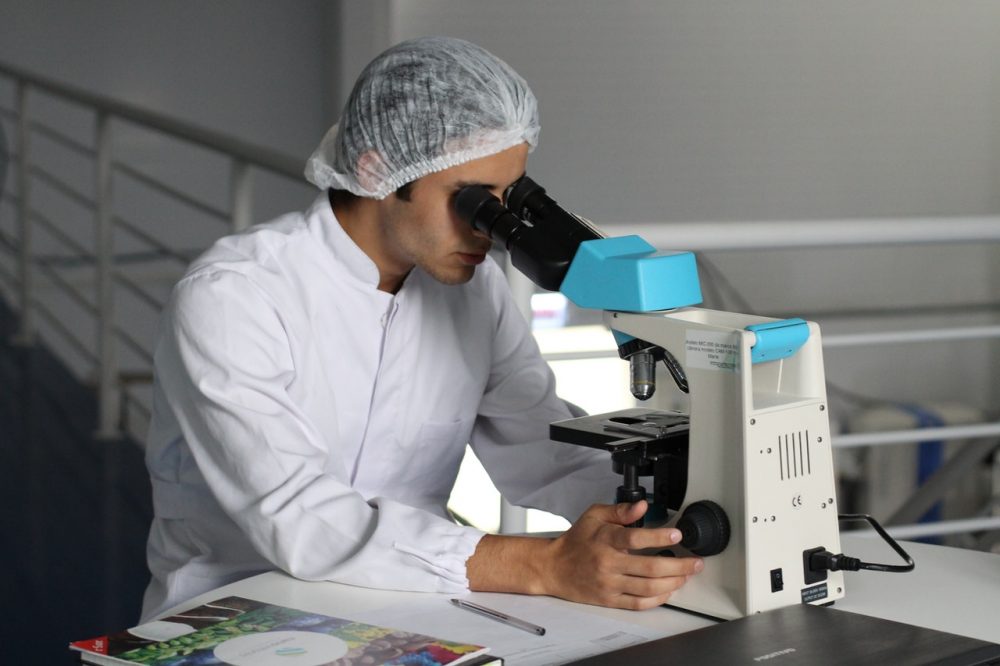
Although choosing relevant biomedical research topics is often an arduous task for many, it shouldn’t be for you. You no longer have to worry as we have provided you with a list of topics in biomedical science in this write-up.
Biomedical research is a broad aspect of science, and it is still evolving. This aspect of science involves a variety of ways to prevent and treat diseases that lead to illness and death in people.
This article contains 45 biomedical topics. The topics were carefully selected to guide you in choosing the right topics. They can be used for presentations, seminars, or research purposes, as the case may be.
So, suppose you need topics in biomedical ethics for papers or biomedical thesis topics for various purposes. In that case, you absolutely have to keep reading! Are you ready to see our list of biomedical topics? Then, let’s roll.
Biomedical Engineering Research Topics
Biomedical engineering is the branch of engineering that deals with providing solutions to problems in medicine and biology. Biomedical engineering research is an advanced area of research. Are you considering taking up research in this direction?
Research topics in this area cannot just be coined while eating pizza. It takes a lot of hard work to think out something meaningful. However, we have made a list for you! Here is a list of biomedical engineering topics!
- How to apply deep learning in biomedical engineering
- Bionics: the latest discoveries and applications
- The techniques of genetic engineering
- The relevance of medical engineering today
- How environmental engineering has affected the world
Biomedical Ethics Topics
There are ethical issues surrounding healthcare delivery, research, biotechnology, and medicine. Biomedical Ethics is fundamental to successful practice experience and is addressed by various disciplines. If you want to research this area, then you do not have to look for topics. Here’s a list of biomedical ethics for paper that you can choose from:
- The fundamentals of a physician-patient relationship
- How to handle disability issues as a health care sector
- Resource allocation and distribution
- All you need to know about coercion, consent, and or vulnerability
- Ethical treatment of subjects or animals in clinical trials
Relevant Biomedical Topics
Topics in Biomedical science are numerous, but not all are relevant today. Since biomedical science is constantly evolving, newer topics are coming up. If you desire in your topic selection, read on. Here is a list of relevant biomedical topics just for you!
- The replacement of gene therapy by gene editing
- Revolution of vaccine development by synthetic biology
- Introduction of artificial blood – the impact on the health sector
- Ten things know about artificial womb
- Transplanted reproductive organs and transgender birth
Biomedical Science Topics
Biomedical science is the aspect of scientific studies that focuses on applying biology and chemistry to health care. This field of science has a broad range of disciplines. If you intend to do research in this field, look at this list of research topics in biomedical science.
- The role of biomechanics in health care delivery
- Importance of biomaterials and regeneration engineering
- The application of cell and molecular engineering to medicine
- The evolution of medical instrumentation and devices
- Neural engineering- the latest discoveries
Seminar Topics for Biomedical Instrumentation
Biomedical science is constantly making progress, especially in the aspect of biomedical instrumentation. This makes it worthy of a seminar presentation in schools where it is taught. However, choosing a biomedical research topic for a biomedical instrumentation seminar may not come easy. This is why we have collated five brilliant topics for biomedical instrumentation just for you. They include:
- Microelectrode in neuro-transplants
- Hyperbaric chamber for oxygen therapy
- How concentric ring electrodes can be used to manage epilepsy
- How electromagnetic interference makes cochlear implants work
- Neuroprosthetics Management using Brain-computer interfaces (BCI)
Biomedical Engineering Topics for Presentation
One of the interesting aspects of biomedical science in biomedical engineering. It is the backbone that gives the biomedical science structure. Are you interested in making presentations about biomedical engineering topics? Or do you need biomedical engineering topics for paper? Get started here! We have compiled a list of biomedical engineering topics for you. Here they are:
- In-the-ear device to control stuttering: the basis of its operation
- How to implement the magnetic navigated catheterization
- Semiconductor-cell interfaces: the rudiments of its application
- The benefits of tissue engineering of muscle
- The benefits of sensitive artificial skin for prosthetic arms
Hot Topics in Biomedical Research
Biomedical research is fun because it is often relatable. As interesting as it seems, choosing a topic for research doesn’t come easy at all. Yet, there are also a lot of trending events around biomedical topics. To simplify your selection process, we have written out a few of them here.
Here are some hot biomedical research topics below.
- What is immunology, and what is the relevance today?
- Regenerative medicine- definition, importance, and application
- Myths about antibiotic resistance
- Vaccine development for COVID-19
- Infectious diseases now and before
Biomedical Research Topics
Biomedical research is an extensive process. It requires a lot of time, dedication, and resources. Getting a topic shouldn’t be added to that list. There are biomedical thesis topics and research topics in biomedical science for you here:
- Air pollution- sources, impact, and prevention
- Covid-19 vaccination- the effect on life expectancy
- Hyper insomnia- what is responsible?
- Alzheimer’s disease- newer treatment approaches
- Introduction of MRI compatible infusion pump
Biomedical Nanotechnology Topics
Biomedical research topics and areas now include nanotechnology. Nanotechnology has extended its tentacles to medicine and has been used to treat cancer successfully. This makes it a good research area. It is good for seminar presentations. Here are some biomedical nanotechnology topics below.
- The uses of functional particles and nanomaterials
- Nanoparticles based drug delivery system
- The incorporation of nanoporous membranes into biomedical devices
- Nanostructured materials for biological sensing
- Nanocrystals- imaging, transportation, and toxicity features
Seeking professional assistance to write your biomedical research or thesis? Look no further! At our reputable writing service, our experienced writers specialize in providing tailored support for the complexities of biomedical research. When you say, “ do my thesis for me ” we’re here to guide you through formulating research questions, conducting literature reviews, and analyzing data sets. Entrust the writing process to our experts while you focus on exploring the frontiers of biomedical research. Contact us today for a meticulously crafted thesis that enhances your chances of success.
We believe you have been thoroughly equipped with a list of biomedical topics. This way, you wouldn’t have to go through the stress of choosing a topic for research, seminars, or other educational purposes. Now that you have the topics at your fingertips make your choice and enjoy!
Frequently Asked Questions
Richard Ginger is a dissertation writer and freelance columnist with a wealth of knowledge and expertise in the writing industry. He handles every project he works on with precision while keeping attention to details and ensuring that every work he does is unique.

Succeed With A Perfect Dissertation
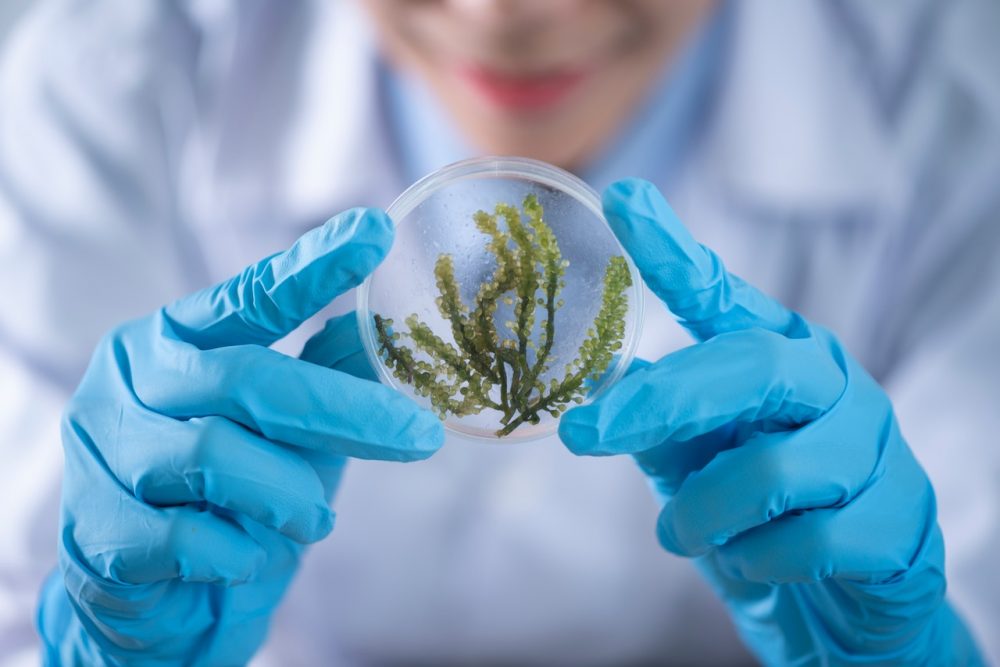
Leave a Reply Cancel reply
Your email address will not be published. Required fields are marked *
Save my name, email, and website in this browser for the next time I comment.
As Putin continues killing civilians, bombing kindergartens, and threatening WWIII, Ukraine fights for the world's peaceful future.
Ukraine Live Updates
Department of Biotechnology and Food Science
- Master's programmes in English
- For exchange students
- PhD opportunities
- All programmes of study
- Language requirements
- Application process
- Academic calendar
- NTNU research
- Research excellence
- Strategic research areas
- Innovation resources
- Student in Trondheim
- Student in Gjøvik
- Student in Ålesund
- For researchers
- Life and housing
- Faculties and departments
- International researcher support
Språkvelger
Phd theses - department of biotechnology and food science.
- Analysis and Control of Microbial Systems
- Biopolymers and Biomaterials
- Food Science
- Microbial Biotechnology
- Bibliography
- More Referencing guides Blog Automated transliteration Relevant bibliographies by topics
- Automated transliteration
- Relevant bibliographies by topics
- Referencing guides
Dissertations / Theses on the topic 'Biotechnology Agriculture'
Create a spot-on reference in apa, mla, chicago, harvard, and other styles.
Consult the top 50 dissertations / theses for your research on the topic 'Biotechnology Agriculture.'
Next to every source in the list of references, there is an 'Add to bibliography' button. Press on it, and we will generate automatically the bibliographic reference to the chosen work in the citation style you need: APA, MLA, Harvard, Chicago, Vancouver, etc.
You can also download the full text of the academic publication as pdf and read online its abstract whenever available in the metadata.
Browse dissertations / theses on a wide variety of disciplines and organise your bibliography correctly.
Zanger, Maggy. "Taking Biotechnology into the Classroom: Biotechnology Tissue Culture Workshop." College of Agriculture, University of Arizona (Tucson, AZ), 1991. http://hdl.handle.net/10150/295695.
Moula, Payam. "Ethical aspects of crop biotechnology in agriculture." Licentiate thesis, KTH, Filosofi, 2015. http://urn.kb.se/resolve?urn=urn:nbn:se:kth:diva-162187.
QC 20150330
Churchill, Jason. "Valuation of Licensing Agreements in Agriculture Biotechnology." Thesis, North Dakota State University, 2016. https://hdl.handle.net/10365/28250.
Porter, Jean Nicole. "A descriptive study of agriculture teachers' awareness of biotechnology and the future of biotechnology education in Illinois /." Available to subscribers only, 2007. http://proquest.umi.com/pqdweb?did=1328062471&sid=30&Fmt=2&clientId=1509&RQT=309&VName=PQD.
Services, UA News. "Institute for Biomedical Science and Biotechnology Becomes BIO5." College of Agriculture and Life Sciences, University of Arizona (Tucson, AZ), 2005. http://hdl.handle.net/10150/622188.
Hughes, Jason E. "Attitudes, knowledge, and implementation of biotechnology and agriscience by West Virginia agricultural education teachers." Morgantown, W. Va. : [West Virginia University Libraries], 2001. http://etd.wvu.edu/templates/showETD.cfm?recnum=1932.
Hébert, Yann. "Simulating input biotechnology adoption using a system dynamics approach." Thesis, McGill University, 2003. http://digitool.Library.McGill.CA:80/R/?func=dbin-jump-full&object_id=78376.
Norwood, Jennifer Lynn. "A semiotic analysis of biotechnology and food safety photographs." Texas A&M University, 2005. http://hdl.handle.net/1969.1/3353.
Holmes, Matthew Robert. "From biological revolution to biotech age : plant biotechnology in British agriculture since 1950." Thesis, University of Leeds, 2017. http://etheses.whiterose.ac.uk/18900/.
Kibe, Alison G. "Farm Scale Feasibility of Exploiting UV Radiation for Sustainable Crop Production." Scholarship @ Claremont, 2015. http://scholarship.claremont.edu/scripps_theses/605.
Teixeira, Rodrigo de Araujo. "Capacitação em melhoramento genetico de plantas no Brasil : situação atual e perspectivas." [s.n.], 2008. http://repositorio.unicamp.br/jspui/handle/REPOSIP/287582.
Candemir, Basak. "Intermediary organisations for knowledge exchange : a comparative study of the agricultural biotechnology sector in the Netherlands and the UK." Thesis, University of Sussex, 2012. http://sro.sussex.ac.uk/id/eprint/43343/.
Lashbrooke, Justin Graham. "Functional analysis of a grapevine carotenoid cleavage dioxygenase (VvCCD1)." Thesis, Stellenbosch : University of Stellenbosch, 2010. http://hdl.handle.net/10019.1/4370.
Barnes, James N. "Regulation of agricultural biotechnology and vertical control in the global agri-food chain : an application of the Coasian lens /." free to MU campus, to others for purchase, 2004. http://wwwlib.umi.com/cr/mo/fullcit?p3144400.
Jones, Mary Ellen. "Politically Corrected Science: The Early Negotiation of U.S. Agricultural Biotechnology Policy." Diss., Virginia Tech, 1999. http://hdl.handle.net/10919/29868.
Klepek, James Matthew. "Against the Grain: Biotechnology Regulation and the Politics of Expertise in Post-War Guatemala." Diss., The University of Arizona, 2011. http://hdl.handle.net/10150/145291.
Lies, Adrien. "Optimisation des performances d’inocula de champignons mycorhiziens dans le cadre d’une agriculture à faibles apports." Thesis, Montpellier, 2016. http://www.theses.fr/2016MONTT145.
Govender, Patrick. "Industrial yeast strains engineered for controlled flocculation." Thesis, Stellenbosch : University of Stellenbosch, 2009. http://hdl.handle.net/10019.1/1450.
Collier, Debbie. "Agriculture, modern biotechnology and the law: An examination of the property paradigm in the context of plant genetic resources." Doctoral thesis, University of Cape Town, 2010. http://hdl.handle.net/11427/4687.
Lebenzon, Tracy Scott. "Double cross : agriculture and genetics, 1930 to 1960." PDXScholar, 1988. https://pdxscholar.library.pdx.edu/open_access_etds/3800.
Loggan, Briley. "Evaluating the Success of Female Selected Sex-Sorted Semen at Western Kentucky University's Dairy Farm." TopSCHOLAR®, 2019. https://digitalcommons.wku.edu/theses/3109.
Venter, Alida. "The functional analysis of Vitaceae polygalacturonase-inhibiting protein (PGIP) encoding genes overexpressed in tobacco." Thesis, Stellenbosch : University of Stellenbosch, 2010. http://hdl.handle.net/10019.1/4350.
Mtshali, Phillip Senzo. "Screening and characterisation of wine related enzymes produced by wine associated lactic acid bacteria." Thesis, Link to the online version, 2007. http://hdl.handle.net/10019/446.
McCormick, Alistair James. "Expression behaviour of primary carbon metabolism genes during sugarcane culm development." Thesis, Stellenbosch : University of Stellenbosch, 2004. http://hdl.handle.net/10019.1/16387.
Chung, Chao-Chen. "Government, governance and the development of the innovation systems : the example of the Taiwanese biotechnology and related sectoral policies." Thesis, University of Manchester, 2011. https://www.research.manchester.ac.uk/portal/en/theses/government-governance-and-the-development-of-the-innovation-systems-the-example-of-the-taiwanese-biotechnology-and-related-sectoral-policies(504024b2-cb76-4624-a31b-3572e4a7fa57).html.
Duygu, Oktem. "Impact Analysis Of European Framework Programmes On Turkish Universities Pilot Study On Information And Communication Technologies, Energy, Food, Agriculture And Fisheries And Biotechnology Themes." Master's thesis, METU, 2012. http://etd.lib.metu.edu.tr/upload/12614947/index.pdf.
ATTATHOM, Supat. "Tasks in Research, Education, and International Collaboration in Agriculture Biotechnology at Kasetsart University With Special Emphasis on the Role of Former Students Who Studied Abroad." 名古屋大学農学国際教育協力研究センター, 2004. http://hdl.handle.net/2237/8935.
Becker, John van Wyk. "Plant defence genes expressed in tobacco and yeast." Thesis, Stellenbosch : University of Stellenbosch, 2002. http://hdl.handle.net/10019/2924.
Le, Dref Gaëlle. "Théories de l'évolution et biotechnologies : d'une controverse à l'autre." Thesis, Strasbourg, 2017. http://www.theses.fr/2017STRAB010/document.
Aheto, Denis Worlanyo. "Implication analysis for biotechnology regulation and management in Africa baseline studies for assessment of potential effects of genetically modified maize (Zea mays L.) cultivation in Ghanaian agriculture." Frankfurt, M. Berlin Bern Bruxelles New York, NY Oxford Wien Lang, 2008. http://d-nb.info/99509473X/04.
Josephs, Jennifer. "Perceptions of Validity: How Knowledge is Created, Transformed and Used in Bio-Agricultural Technology Safety Testing for the Development of Government Policies and Regulations." NSUWorks, 2017. http://nsuworks.nova.edu/shss_dcar_etd/59.
Mbewana, Sandiswa. "Functional analysis of a lignin biosynthetic gene in transgenic tobacco." Thesis, Stellenbosch : University of Stellenbosch, 2010. http://hdl.handle.net/10019.1/4276.
Rosado, Carlos Miguel Barreto Ribeiro Serra. "Indústria agroquímica e desenvolvimento sustentável." Master's thesis, Instituto Superior de Economia e Gestão, 2020. http://hdl.handle.net/10400.5/21620.
Olagunju, Emmanuel Gbenga. "Water resources development: opportunities for increased agricultural production in Nigeria." Thesis, Linköping University, Department of Water and Environmental Studies, 2007. http://urn.kb.se/resolve?urn=urn:nbn:se:liu:diva-10031.
Agriculture has been the backbone of the economy in Nigeria providing employment and source of livelihood for the increasing population and accounting for over half of the GDP of the Nigeria economy at independence in 1960. However, the role it plays in the regional and economic development of the country has diminished over the years due to the dominant role of the crude oil sector in the economy. With the increasing food demand in Nigeria, the country has available input natural resources and potential for increasing the volume of crop production towards meeting the food and nutritional requirement of the rapidly increasing population and guarantee food security in the country. The study was undertaken to analyse the effect of different factors and policies on the changes in trend of crop production and investigate the possible effect of water resources development on increased volume of agricultural crop production in Nigeria.
The study revealed that there are opportunities for water resources development in the country through irrigation to supplement the water requirements and needs of farmers for agricultural production activities in many areas in the semi-arid and arid regions. Available data shows that there are available land and water resources that could be developed to support the production of food and agricultural development with opportunity for increased productivity.
However, while the water resources are unevenly distributed in the country, there is need for the efficient use and management of the available water resources and increasing the productive use especially in the northern region of the country where there is increasing incidence of drought and competing need for water among the different sectors of the economy. The study also made possible recommendations for policy formulation to address the current problems facing the agricultural sector in conjunction with the requirement for the development of the water resources.
Griffiths, Jeanne Berdine. "The effect of extrusion on the degradability parameters of various vegetable protein sources." Thesis, Stellenbosch : University of Stellenbosch, 2004. http://hdl.handle.net/10019.1/16333.
Sivakumar, Gayathri. "Agricultural biotechnology and Indian newspapers." Thesis, Texas A&M University, 2004. http://hdl.handle.net/1969.1/1133.
Ng, Kenneth K. "Investigation of Bacillus subtilis as a Biopesticide Against Botrytis cinerea." DigitalCommons@CalPoly, 2012. https://digitalcommons.calpoly.edu/theses/717.
Fraser, W. J. "Manipulation of the taste of Regal Seedless (Vitis vinifera L.) table grapes." Thesis, Link to the online version, 2007. http://hdl.handle.net/10019/352.
Williams, Carrie. "The Detriments of Factory Farming." Digital Commons @ East Tennessee State University, 2018. https://dc.etsu.edu/honors/462.
Anderson, Shonda Renee. "Preferences of US, EU, Honduran, and Chinese undergraduates for cloning." Thesis, Kansas State University, 2011. http://hdl.handle.net/2097/8635.
Cao, Yiying. "Innovation diffusion of agricultural biotechnology in China." Thesis, University of Northampton, 2009. http://nectar.northampton.ac.uk/4958/.
Nadolnyak, Denis Alexandrovic Jr. "Three essays on the economics of agricultural biotechnology." The Ohio State University, 2003. http://rave.ohiolink.edu/etdc/view?acc_num=osu1058818716.
Smit, Anita Yolandi. "Evaluating the influence of winemaking practices on biogenic amine production by wine microorganisms." Thesis, Link to the online version, 2007. http://hdl.handle.net/10019/1212.
Barrett, Katherine J. "Canadian agricultural biotechnology, risk assessment and the precautionary principle." Thesis, National Library of Canada = Bibliothèque nationale du Canada, 1999. http://www.collectionscanada.ca/obj/s4/f2/dsk1/tape2/PQDD_0018/NQ48601.pdf.
Flagg, Ian Marshall. "The Valuation of Agricultural Biotechnology: The Real Options Approach." Thesis, North Dakota State University, 2008. https://hdl.handle.net/10365/29761.
Huzair, Farah. "Innovative capabilities of the agricultural biotechnology sector in Hungary." Thesis, Open University, 2008. http://oro.open.ac.uk/31892/.
Duru, Godwin Chukwunenye. "Biotechnology research in Nigeria : a socioeconomic analysis of the organization of agricultural research system's response to biotechnology /." The Ohio State University, 1988. http://rave.ohiolink.edu/etdc/view?acc_num=osu1487596307359591.
Vigorito, Anthony J. "Agricultural biotechnology, corporate hegemony, and the industrial colonization of science /." The Ohio State University, 2002. http://rave.ohiolink.edu/etdc/view?acc_num=osu1486459267522341.
Paul, Marquisha A. "EFFECTS OF POST-HATCH HOLDING TIME AND EARLY NUTRITION STRATEGIES ON GROWTH PERFORMANCE, CARCASS AND SKELETAL CHARACTERISTICS OF YOUNG CHICKENS." UKnowledge, 2015. http://uknowledge.uky.edu/animalsci_etds/50.
Miller, Erin Suzanne. "Increasing Expression of Hepatitis B Surface Antigen in Maize through Breeding." DigitalCommons@CalPoly, 2015. https://digitalcommons.calpoly.edu/theses/1359.
Suggestions or feedback?
MIT News | Massachusetts Institute of Technology
- Machine learning
- Social justice
- Black holes
- Classes and programs
Departments
- Aeronautics and Astronautics
- Brain and Cognitive Sciences
- Architecture
- Political Science
- Mechanical Engineering
Centers, Labs, & Programs
- Abdul Latif Jameel Poverty Action Lab (J-PAL)
- Picower Institute for Learning and Memory
- Lincoln Laboratory
- School of Architecture + Planning
- School of Engineering
- School of Humanities, Arts, and Social Sciences
- Sloan School of Management
- School of Science
- MIT Schwarzman College of Computing
Five MIT faculty members take on Cancer Grand Challenges
Press contact :.

Previous image Next image
Cancer Grand Challenges recently announced five winning teams for 2024, which included five researchers from MIT: Michael Birnbaum, Regina Barzilay, Brandon DeKosky, Seychelle Vos, and Ömer Yilmaz. Each team is made up of interdisciplinary cancer researchers from across the globe and will be awarded $25 million over five years.
Birnbaum, an associate professor in the Department of Biological Engineering, leads Team MATCHMAKERS and is joined by co-investigators Barzilay, the School of Engineering Distinguished Professor for AI and Health in the Department of Electrical Engineering and Computer Science and the AI faculty lead at the MIT Abdul Latif Jameel Clinic for Machine Learning in Health; and DeKosky, Phillip and Susan Ragon Career Development Professor of Chemical Engineering. All three are also affiliates of the Koch Institute for Integrative Cancer Research At MIT.
Team MATCHMAKERS will take advantage of recent advances in artificial intelligence to develop tools for personalized immunotherapies for cancer patients. Cancer immunotherapies, which recruit the patient’s own immune system against the disease, have transformed treatment for some cancers, but not for all types and not for all patients.
T cells are one target for immunotherapies because of their central role in the immune response. These immune cells use receptors on their surface to recognize protein fragments called antigens on cancer cells. Once T cells attach to cancer antigens, they mark them for destruction by the immune system. However, T cell receptors are exceptionally diverse within one person’s immune system and from person to person, making it difficult to predict how any one cancer patient will respond to an immunotherapy.
Team MATCHMAKERS will collect data on T cell receptors and the different antigens they target and build computer models to predict antigen recognition by different T cell receptors. The team’s overarching goal is to develop tools for predicting T cell recognition with simple clinical lab tests and designing antigen-specific immunotherapies. “If successful, what we learn on our team could help transform prediction of T cell receptor recognition from something that is only possible in a few sophisticated laboratories in the world, for a few people at a time, into a routine process,” says Birnbaum.
“The MATCHMAKERS project draws on MIT’s long tradition of developing cutting-edge artificial intelligence tools for the benefit of society,” comments Ryan Schoenfeld, CEO of The Mark Foundation for Cancer Research. “Their approach to optimizing immunotherapy for cancer and many other diseases is exemplary of the type of interdisciplinary research The Mark Foundation prioritizes supporting.” In addition to The Mark Foundation, the MATCHMAKERS team is funded by Cancer Research UK and the U.S. National Cancer Institute.
Vos, the Robert A. Swanson (1969) Career Development Professor of Life Sciences and HHMI Freeman Hrabowksi Scholar in the Department of Biology, will be a co-investigator on Team KOODAC. The KOODAC team will develop new treatments for solid tumors in children, using protein degradation strategies to target previously “undruggable” drivers of cancers. KOODAC is funded by Cancer Research UK, France's Institut National Du Cancer, and KiKa (Children Cancer Free Foundation) through Cancer Grand Challenges.
As a co-investigator on team PROSPECT, Yilmaz, who is also a Koch Institute affiliate, will help address early-onset colorectal cancers, an emerging global problem among individuals younger than 50 years. The team seeks to elucidate pathways, risk factors, and molecules involved in the disease’s development. Team PROSPECT is supported by Cancer Research UK, the U.S. National Cancer Institute, the Bowelbabe Fund for Cancer Research UK, and France's Institut National Du Cancer through Cancer Grand Challenges.
Share this news article on:
Related links.
- Koch Institute for Integrative Cancer Research
- Department of Biological Engineering
- Department of Biology
- Department of Chemical Engineering
- Department of Electrical Engineering and Computer Science
Related Topics
- Awards, honors and fellowships
- Biological engineering
- Chemical engineering
- Artificial intelligence
- Koch Institute
- Jameel Clinic
- Electrical Engineering & Computer Science (eecs)
Related Articles
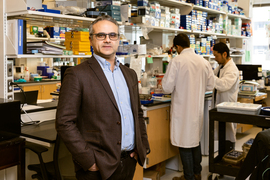
Exploring the links between diet and cancer
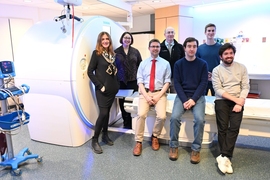
MIT researchers develop an AI model that can detect future lung cancer risk
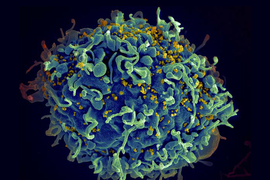
New tool reveals how immune cells find their targets
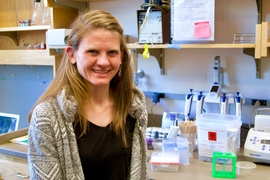
3 Questions: Seychelle Vos on detangling DNA
Previous item Next item
More MIT News
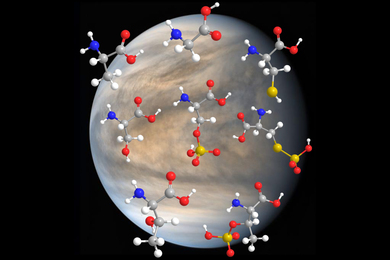
Study: Life’s building blocks are surprisingly stable in Venus-like conditions
Read full story →
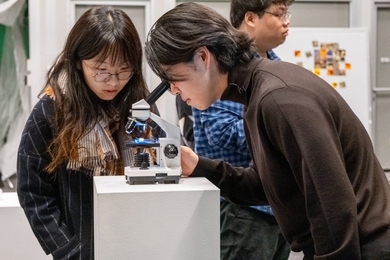
Creative collisions: Crossing the art-science divide
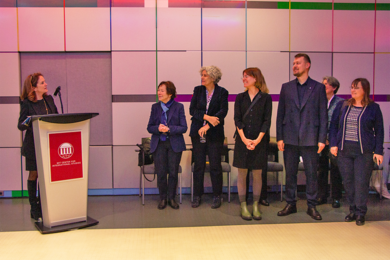
Visting scholars from Ukraine kick off Global MIT At-Risk Fellows Program

3 Questions: Progress on updating MIT’s undergraduate curriculum
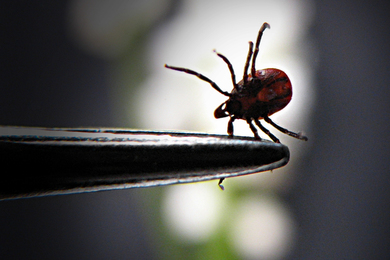
A protein found in human sweat may protect against Lyme disease

Pushing material boundaries for better electronics
- More news on MIT News homepage →
Massachusetts Institute of Technology 77 Massachusetts Avenue, Cambridge, MA, USA
- Map (opens in new window)
- Events (opens in new window)
- People (opens in new window)
- Careers (opens in new window)
- Accessibility
- Social Media Hub
- MIT on Facebook
- MIT on YouTube
- MIT on Instagram

IMAGES
VIDEO
COMMENTS
Biotechnology, at its core, involves the application of biological systems, organisms, or derivatives to develop technologies and products for the benefit of humanity. The scope of biotechnology research is broad, covering areas such as genetic engineering, biomedical engineering, environmental biotechnology, and industrial biotechnology.
If you're just starting out exploring biotechnology-related topics for your dissertation, thesis or research project, you've come to the right place. In this post, we'll help kickstart your research topic ideation process by providing a hearty list of research topics and ideas, including examples from recent studies.. PS - This is just the start…
Research Topic For Biotechnology 2023. Sr. No. Research Topic. Check Thesis. 1. Identification of genetic locus associated with resistance to brown planthopper. Download. 2. Identifying genes expressed during water stress in rice cv Nootripathu roots.
Look at some of the top trends in biotech research and recent Biotechnology Topics that are bringing massive changes in this vast world of science, resulting in some innovation in life sciences and biotechnology ideas. Development of vaccine: Development of mRNA has been done since 1989 but has accelerated to combat the pandemic. As per many ...
Top 100 Biotechnology Dissertation Topics Trending in the Year 2021. We have prepared the list of top 100 most recommended dissertation topics prepared by our research experts. They have ensured to provide a comprehensive list of topics that are covering all the dimensions of the subject.
A further area of research in biotechnology research is the study of the genetic diversity of humans for its applications in criminal justice. Some of the topics that could be studied include, Y-chromosome Forensic Kit, Development of commercial prototype. Genetic testing of Indels in African populations.
A Help with english homework shares 15 trending biotechnology research topics. The interrelation between the consumption of iron-folic acid during pregnancy and its effect on the complete health ...
Hot Research Topics in Biotech in 2022. By ZAGENO. •. February 9, 2022. •. The past few years years have seen leaps and strides of innovation as scientists have worked to develop and produce new mRNA vaccinations and made major developments in biotech research. During this time, they've also faced challenges.
Biotechnology Research Paper Topics. This collection of biotechnology research paper topics provides the list of 10 potential topics for research papers and overviews the history of biotechnology. The term biotechnology came into popular use around 1980 and was understood to mean the industrial use of microorganisms to make goods and services ...
Functional Materials: Applications in Biology and Medicine. Fengling Cui. Octavio Luiz Franco. Jishi Wei. Shuang Wei. 271 views. A multidisciplinary journal that accelerates the development of biological therapies, devices, processes and technologies to improve our lives by bridging the gap between discoveries and their appl...
Theses/Dissertations from 2022. PDF. Regulation of the Heat Shock Response via Lysine Acetyltransferase CBP-1 and in Neurodegenerative Disease in Caenorhabditis elegans, Lindsey N. Barrett. PDF. Determining the Role of Dendritic Cells During Response to Treatment with Paclitaxel/Anti-TIM-3, Alycia Gardner. PDF.
Theses from 2021 PDF. Exploring Knockdown Phenotypes and Interactions between ATAD3 Proteins in Arabidopsis thaliana, Eli S. Gordon, Molecular & Cellular Biology. PDF. Development of a Site-Specific Labeling Assay to Study the Pseudomonas aeruginosa Type III Secretion Translocon in Native Membranes, Kyle A. Mahan, Molecular & Cellular Biology. PDF
By Jared Lewis. Biochemists and other research scientists who work in the field of biotechnology can expect better than average job growth between 2008 and 2018, according to projections by the U.S. Bureau of Labor Statistics. Most of the work in this field is research-oriented and requires advanced degrees like a Ph.D. for employment.
This thesis analyzes the decisions made by management of a biotech company that turned out to be successful in preventing the spread of COVID-19 on its campus, while generating record-breaking profit margins. The case study company is a medium-sized biotechnology company, called "Biocorp" (name changed). Brief company
However, the MBP ensures that each of the 12 areas of research listed on our website continue to be adequately represented by research projects. Biomaterials. Cancer Biotechnology. Cardiovascular Biology and Transplantation Biology. Cell and Molecular Biology. Developmental Biology and Neurobiology. Diagnostics and Medical Devices.
As the biotechnology scope is expanding day by day, researchers felt an urge to classify main areas and types of biotechnology depending on some commonalities and their ultimate objectives: List of Biotechnology Research Topics for high school, college and PHD research students in areas of food, agriculture, medical, environment.
Master's Thesis. The master's degree programme concludes with a master's thesis of 35 weeks duration that includes a written report and oral presentation. The topic of the thesis can be chosen according to the student's interests in the field of biotechnology. Important: the master's thesis needs to ...
Topics. Some of the major topics that can be taken for research by biotech researchers are: InlA of Listeria monocytogenes in composite with human E-cadherin. InlC of Listeria monocytogenes in multipart with human Tuba. Phospholipase PatA of Legionella pnemophila. Inactivation of mammalian TLR2 by an inhibiting antibody.
1000+ FREE Research Topics & Ideas. If you're at the start of your research journey and are trying to figure out which research topic you want to focus on, you've come to the right place. Select your area of interest below to view a comprehensive collection of potential research ideas. AI & Machine Learning. Blockchain & Cryptocurrency.
Biomedical research is an extensive process. It requires a lot of time, dedication, and resources. Getting a topic shouldn't be added to that list. There are biomedical thesis topics and research topics in biomedical science for you here: Air pollution- sources, impact, and prevention; Covid-19 vaccination- the effect on life expectancy
Biotechnology Thesis Manual Biotechnology Program Graduate Thesis Policies and Guidelines Working Draft: March 2005. Edited January 2008 ... The thesis topic should be one that will further the student's knowledge and ability in the specialty by demonstrating skill as a researcher. The outcome should be an effort
PhD Theses. Salting of Muscle Foods - Effects of processing conditions and sodium reduction. Characterisation of a novel gelatin-based drug delivery system. Oxidation of marine lipids in liposomes and emulsions mediated by iron and methemoglobin. Bacterial Recombinant Expression by Positively Regulated XylS/ Pm Promoter System - Comparative.
This thesis analyses a few selected aspects of crop biotechnology in agriculture. The thesis contains two essays; the first addresses the topic of how ethical tools can help to, especially in democratic societies, improve ethical judgments on modern biotechnologies used in agriculture and food production.
MIT faculty members Michael Birnbaum, Regina Barzilay, Brandon DeKosky, Seychelle Vos, and Omer Yilmaz join three winning Cancer Grand Challenges teams to take on projects in personalized cancer immunotherapies, early-onset colorectal cancers, and developing new treatments for children's cancers.
Stocks of biotech companies started to bounce back during the second half of last year. Photo: Roger Kisby for The Wall Street Journal The best time to make money in biotech is usually during ...
SCHOTT Pharma USA, Inc., a global leader in manufacturing drug containment solutions and delivery systems for the pharmaceutical and biotech industry, will establish a new production facility in Wilson County, creating 401 jobs, Governor Roy Cooper announced today. The company will invest $371 million in the City of Wilson.